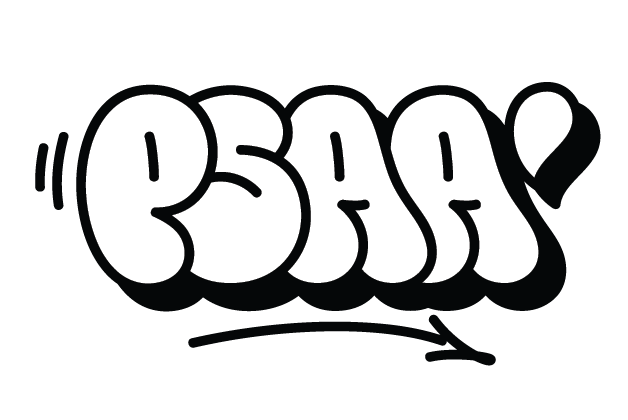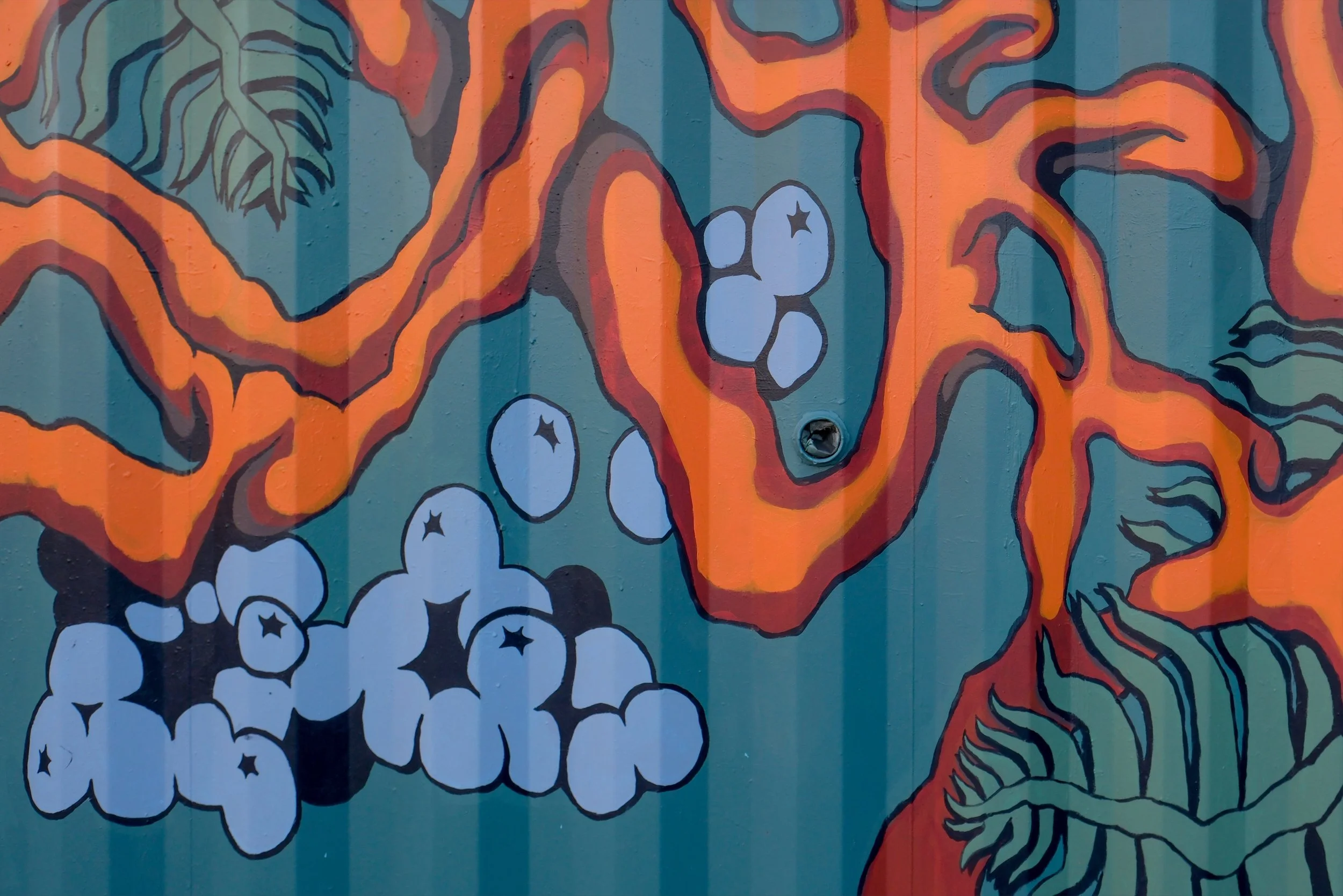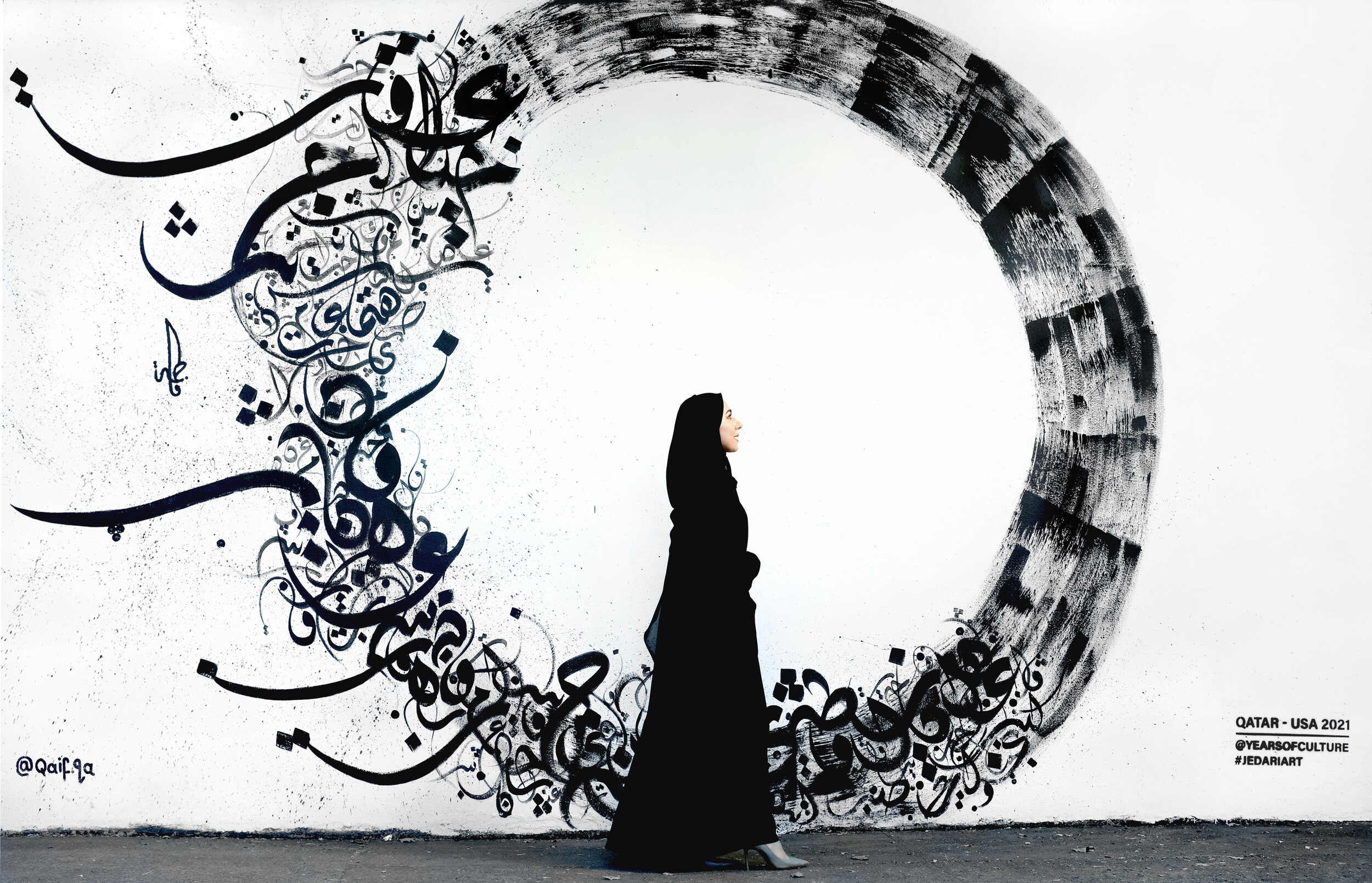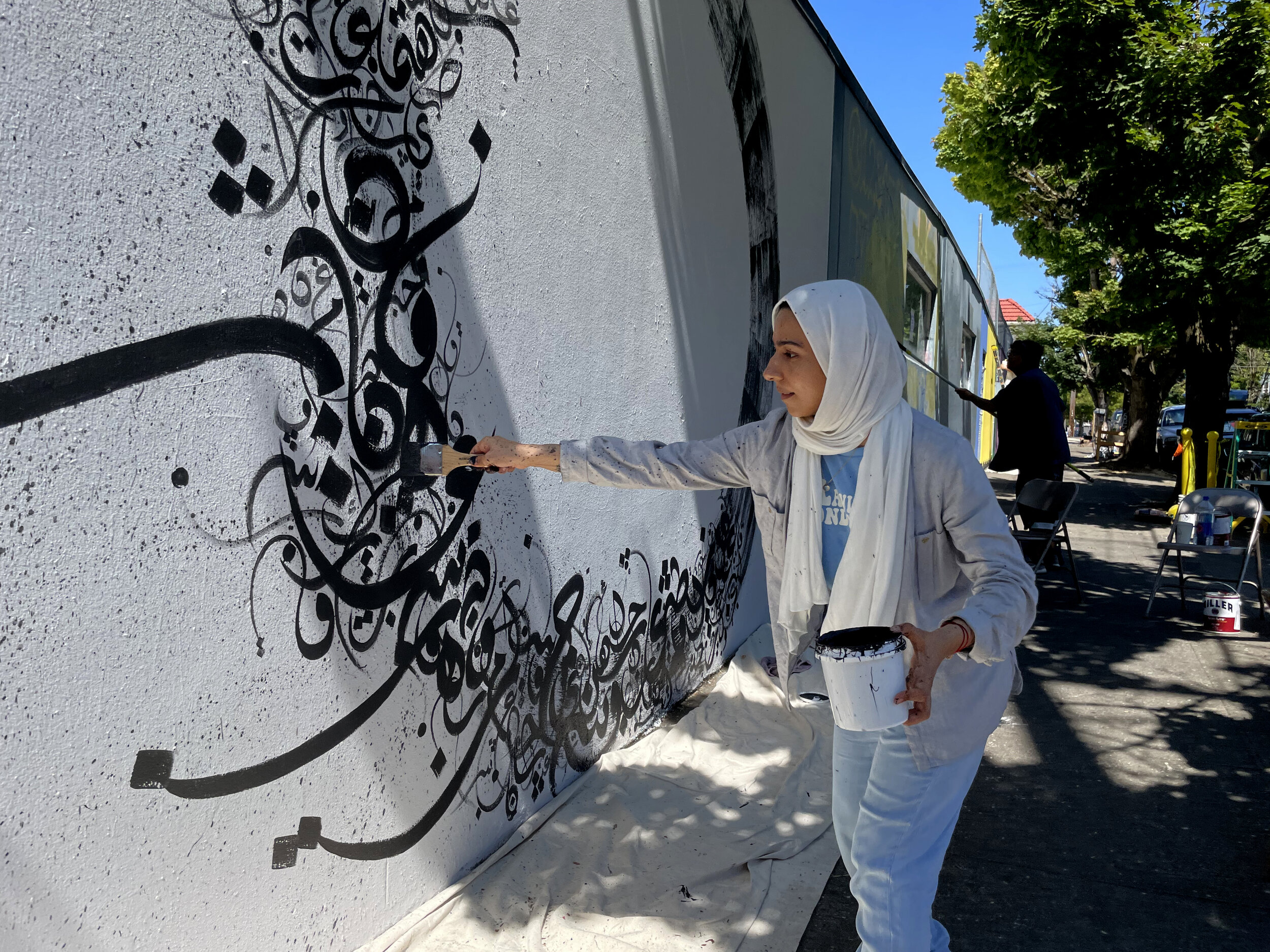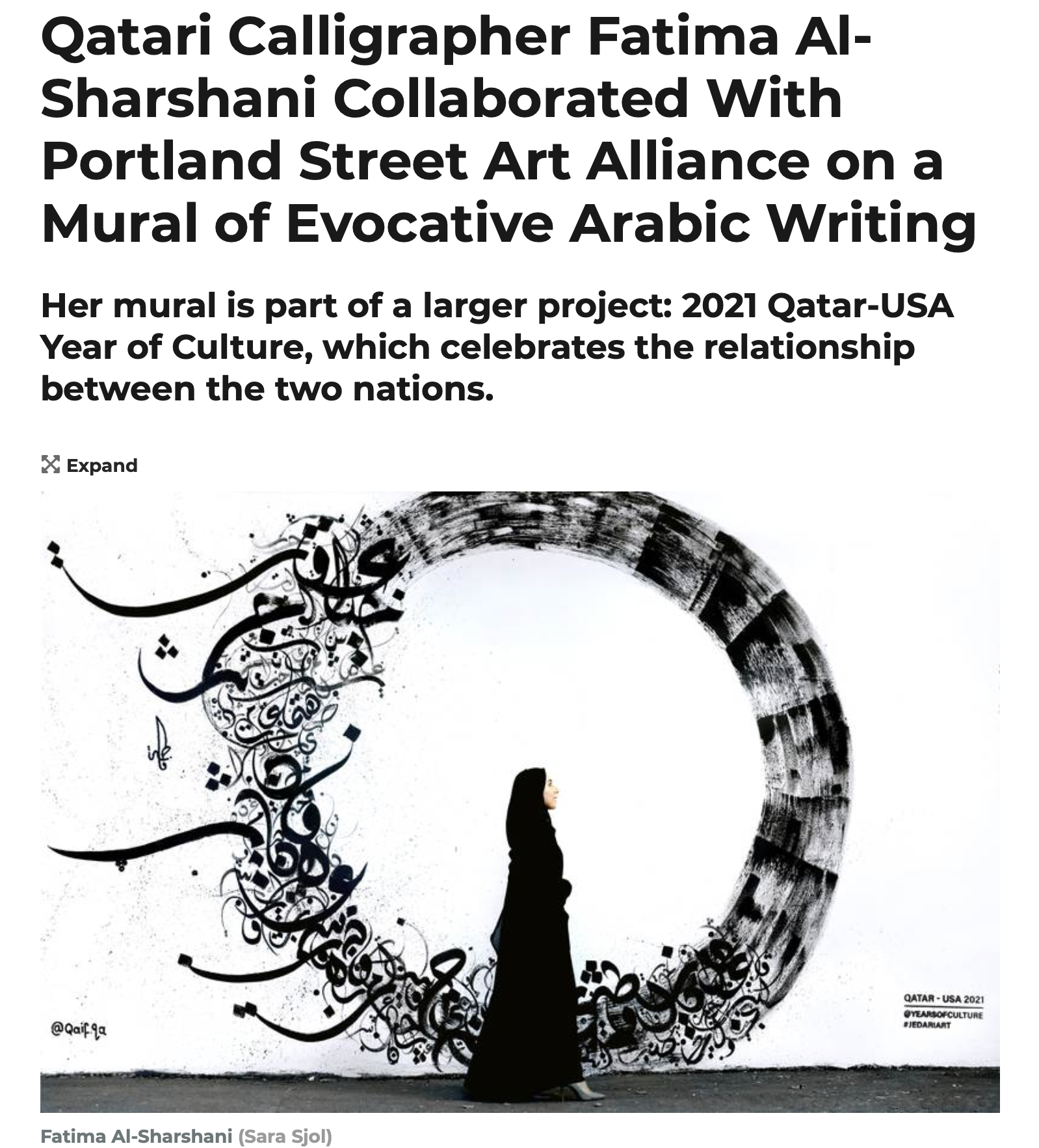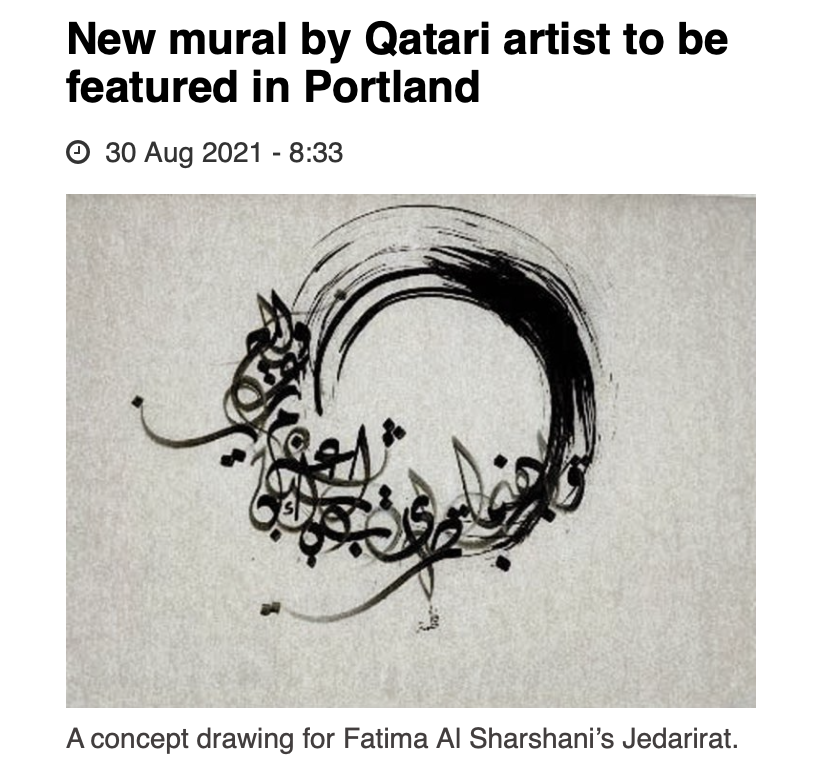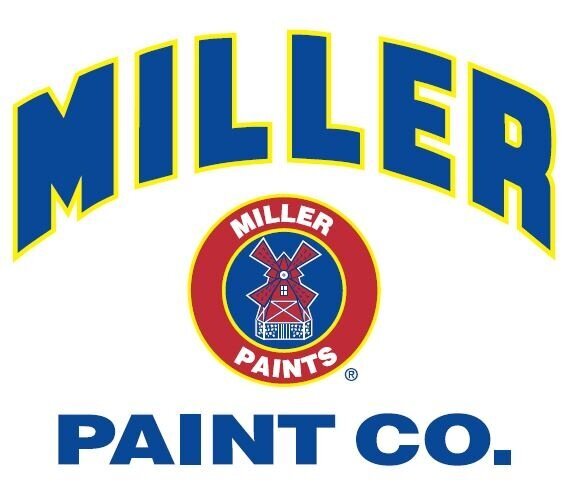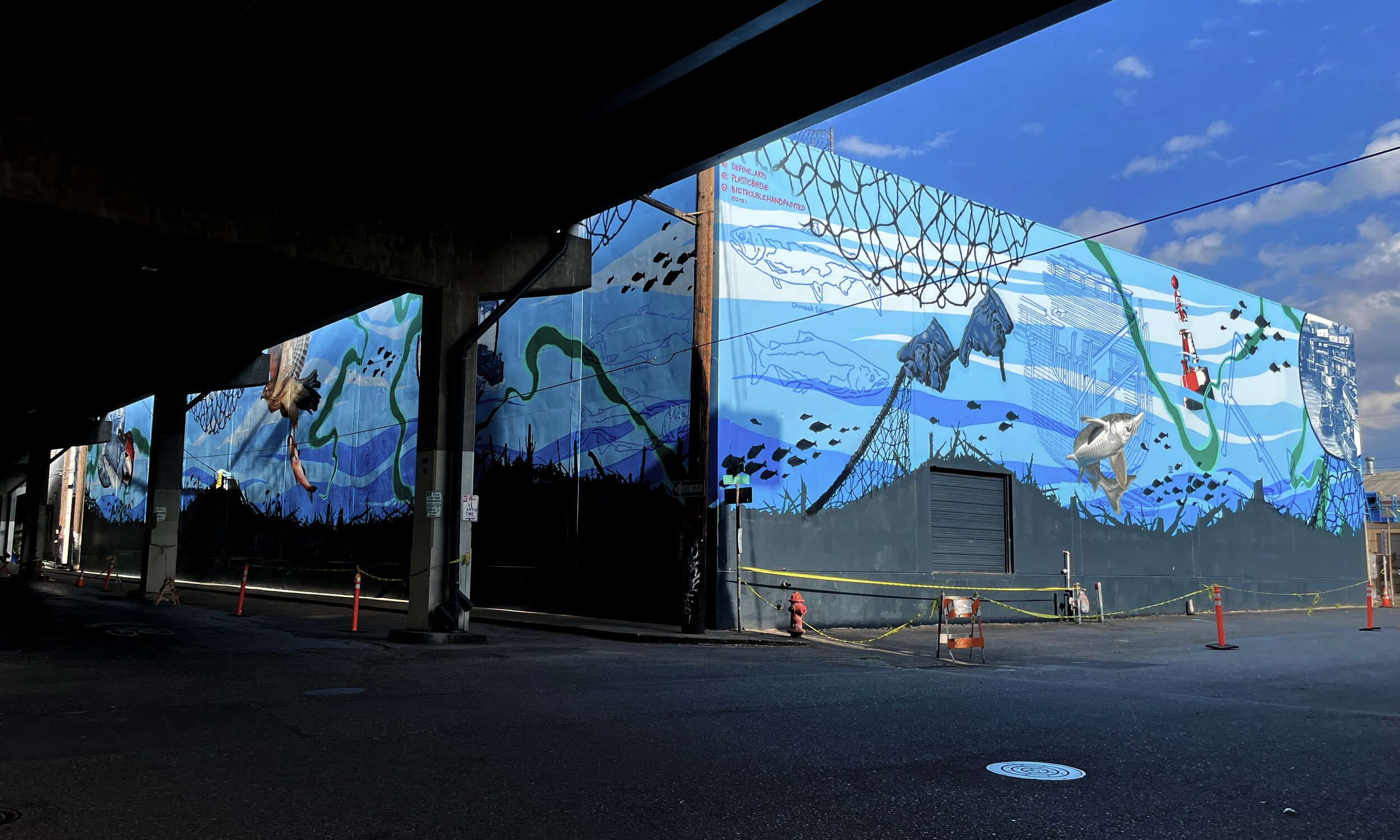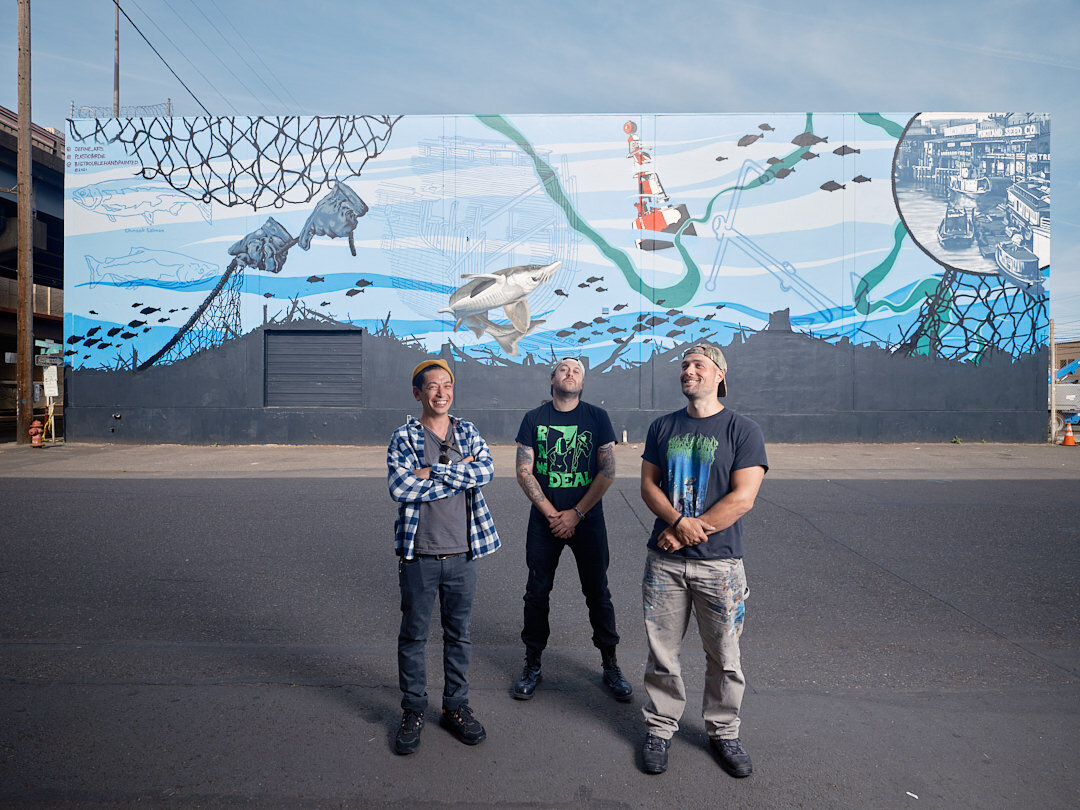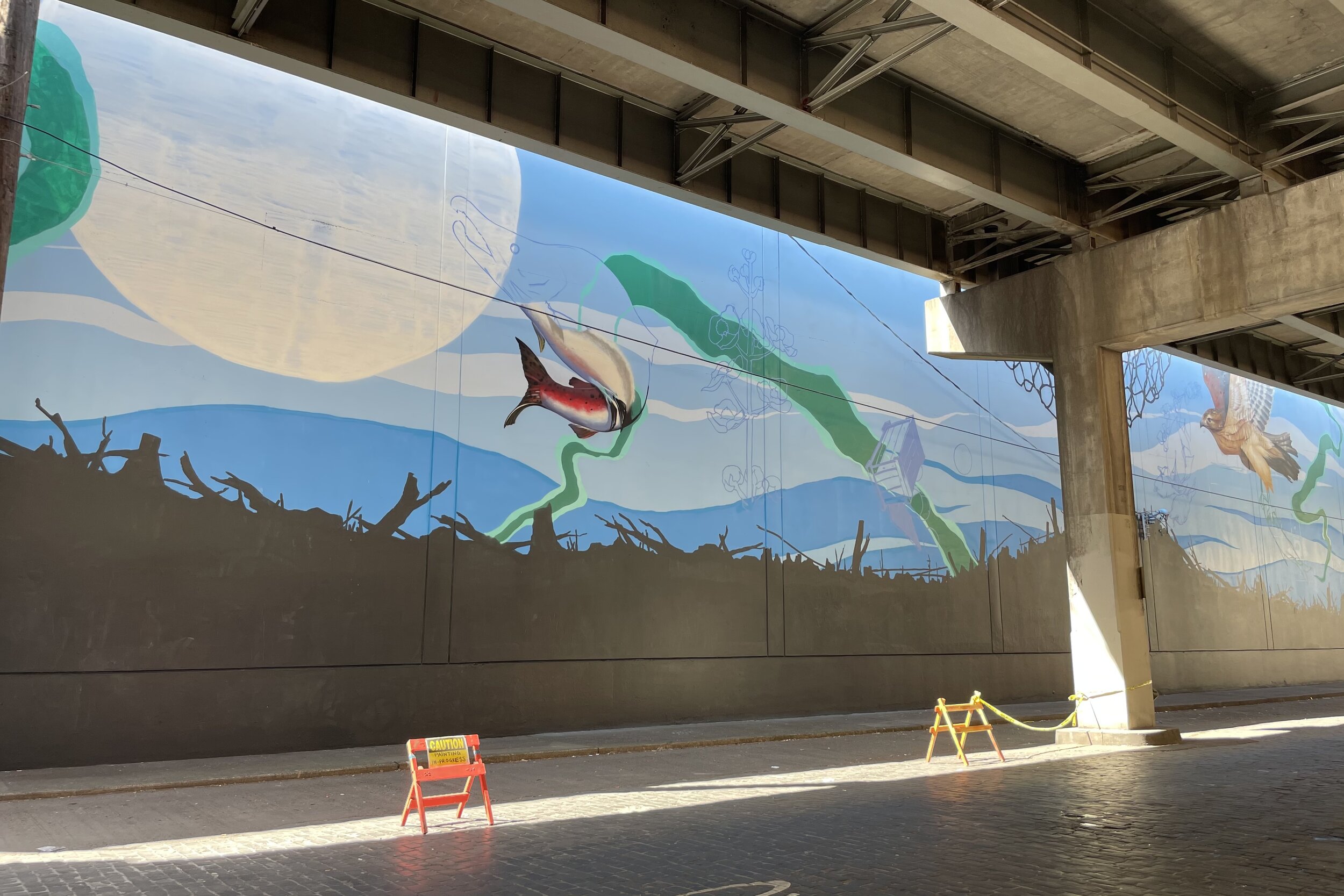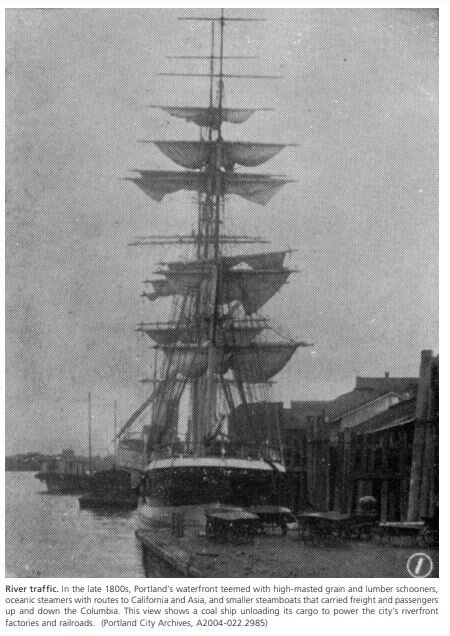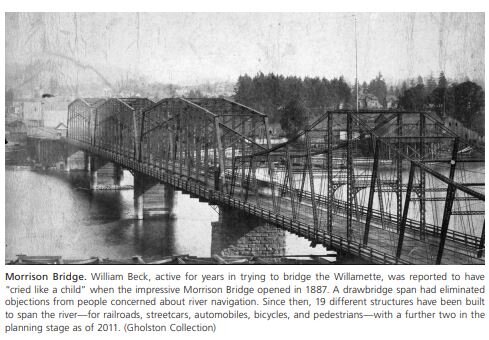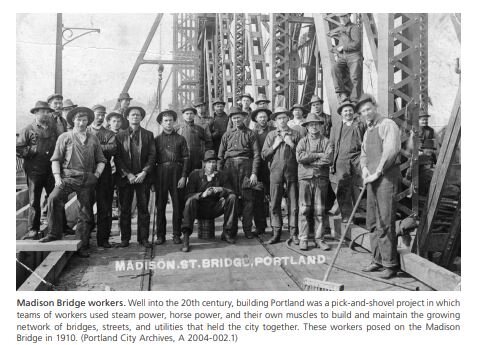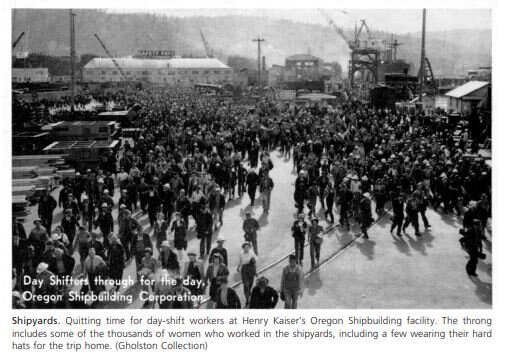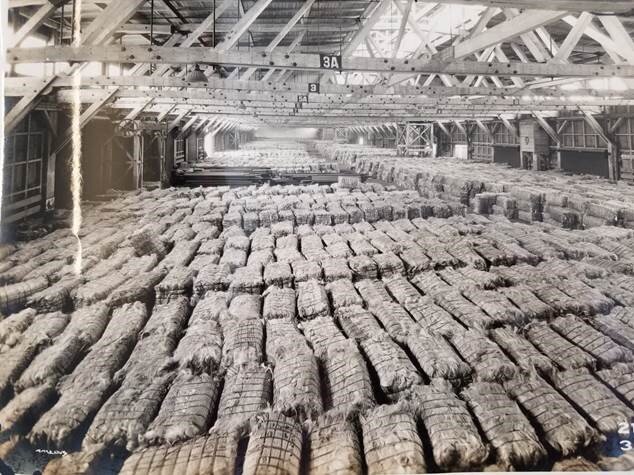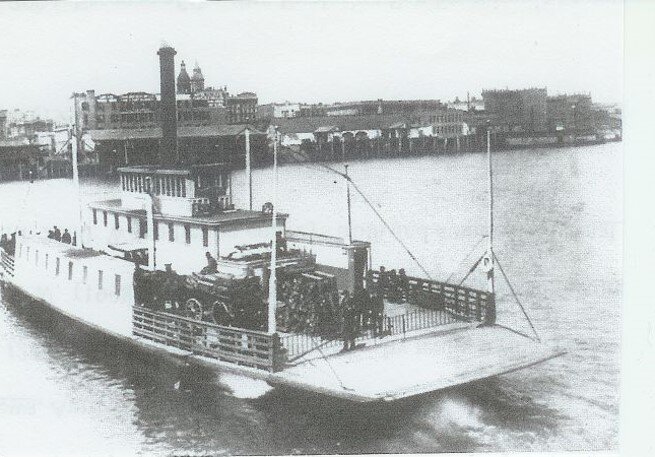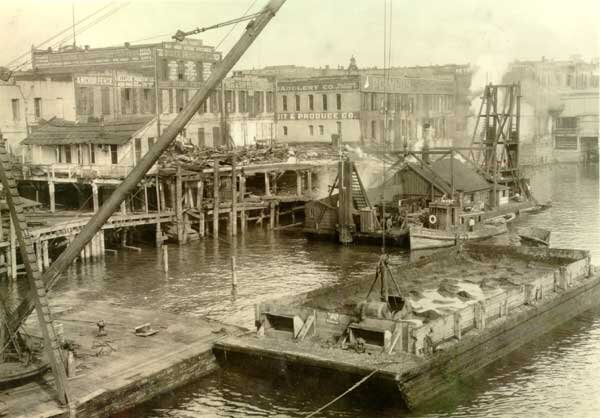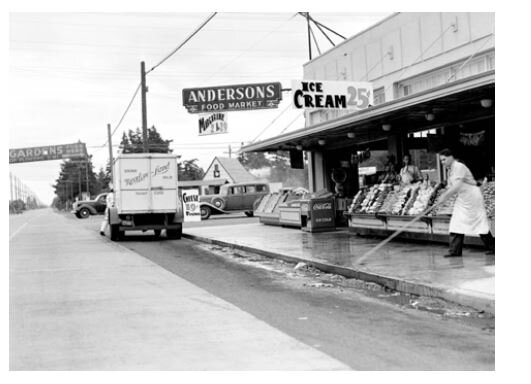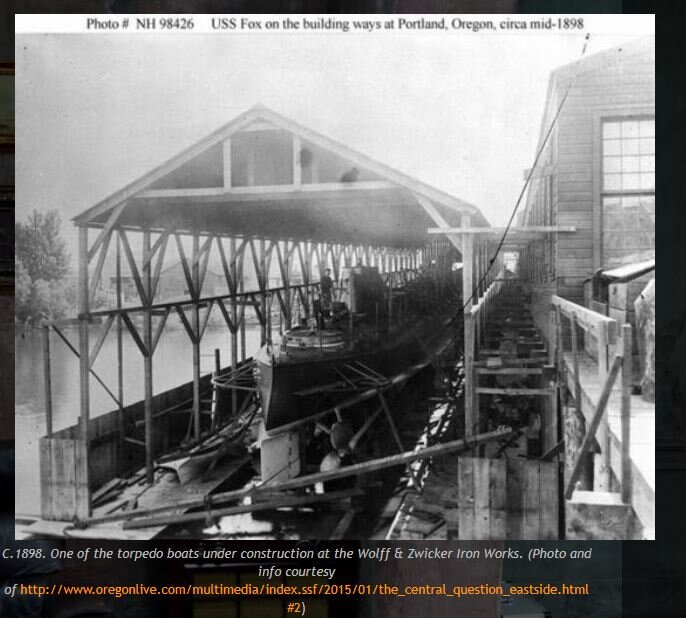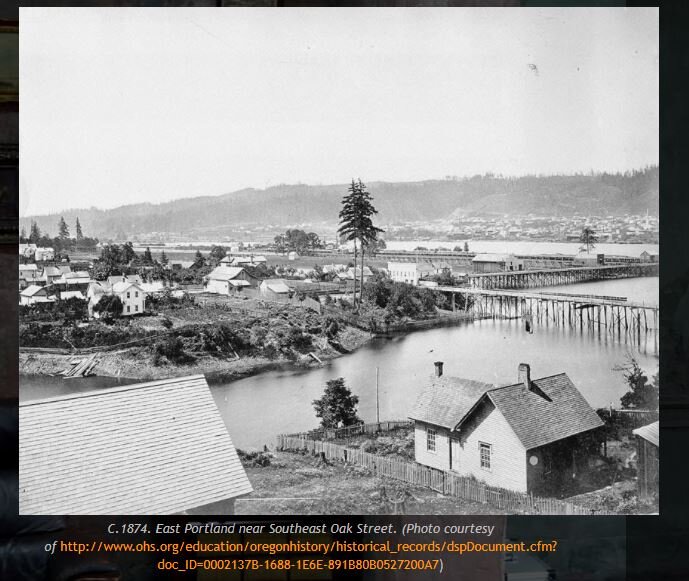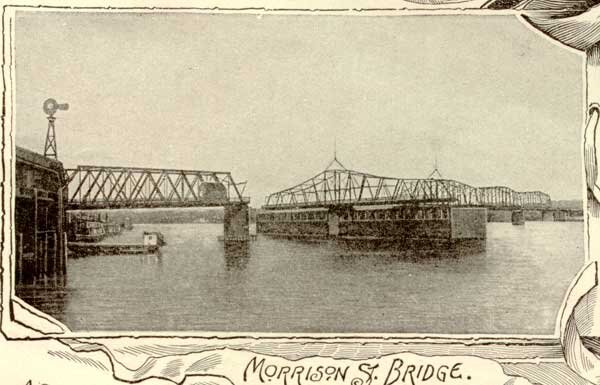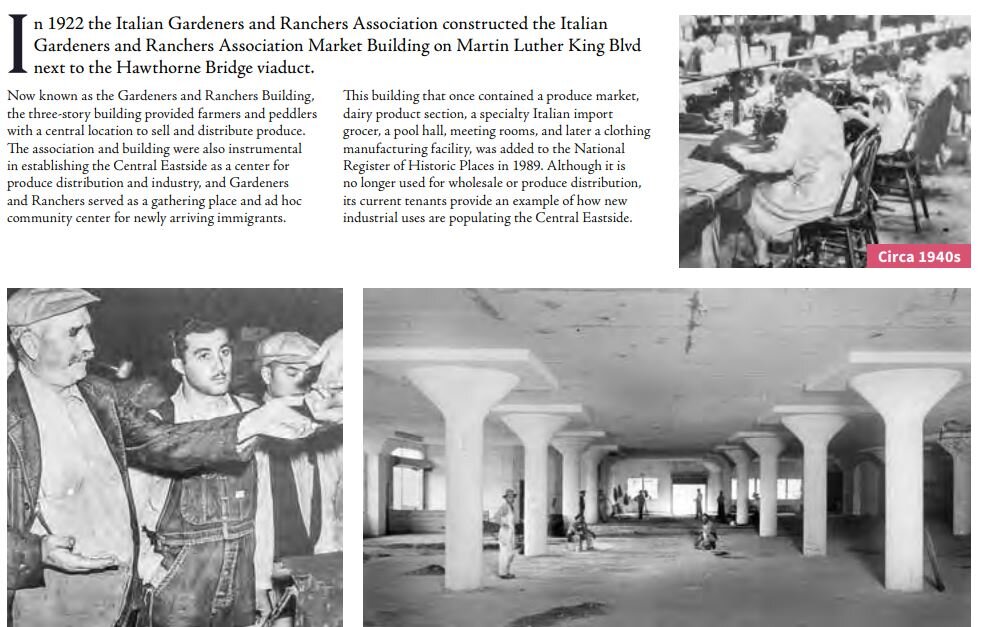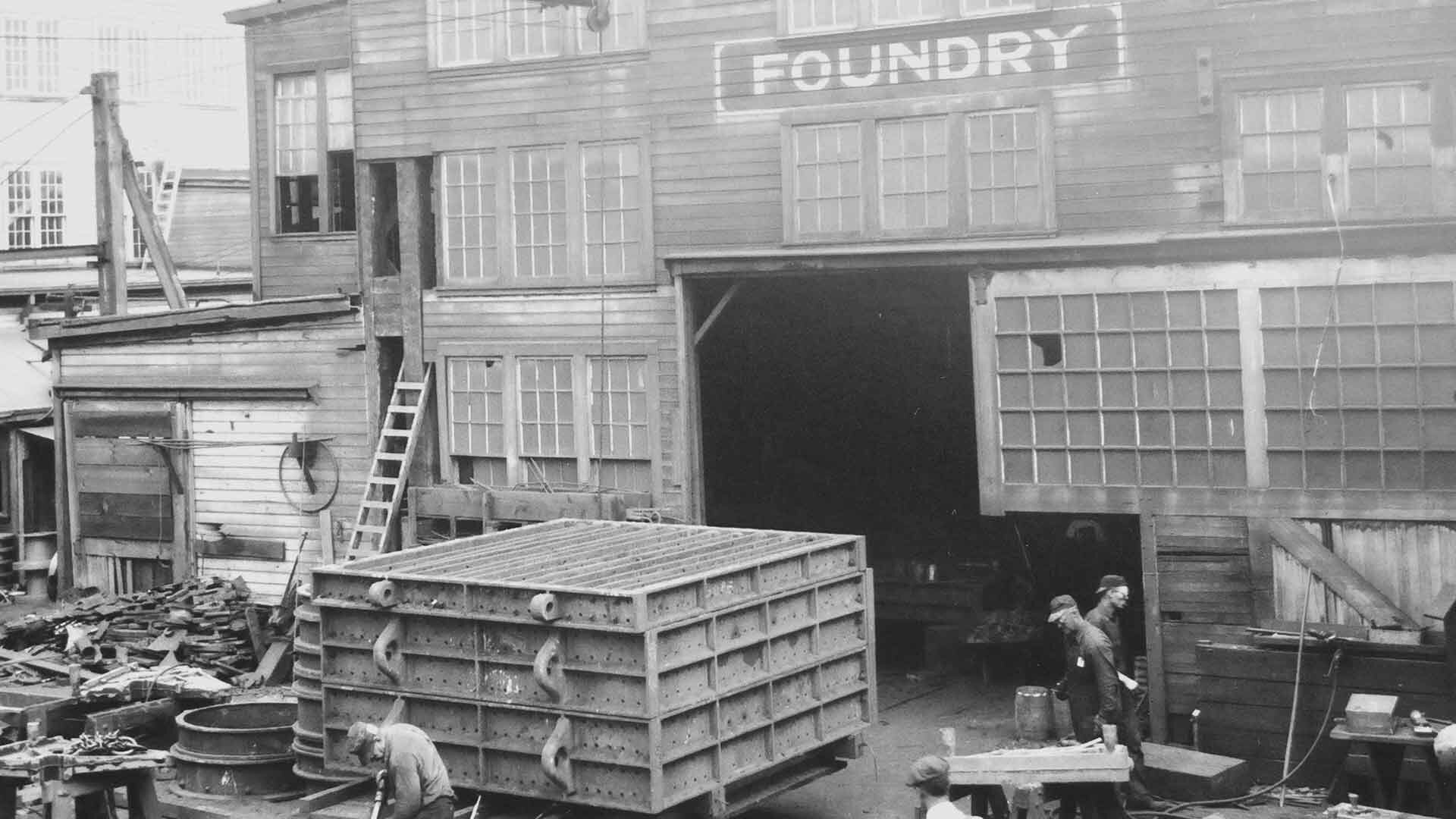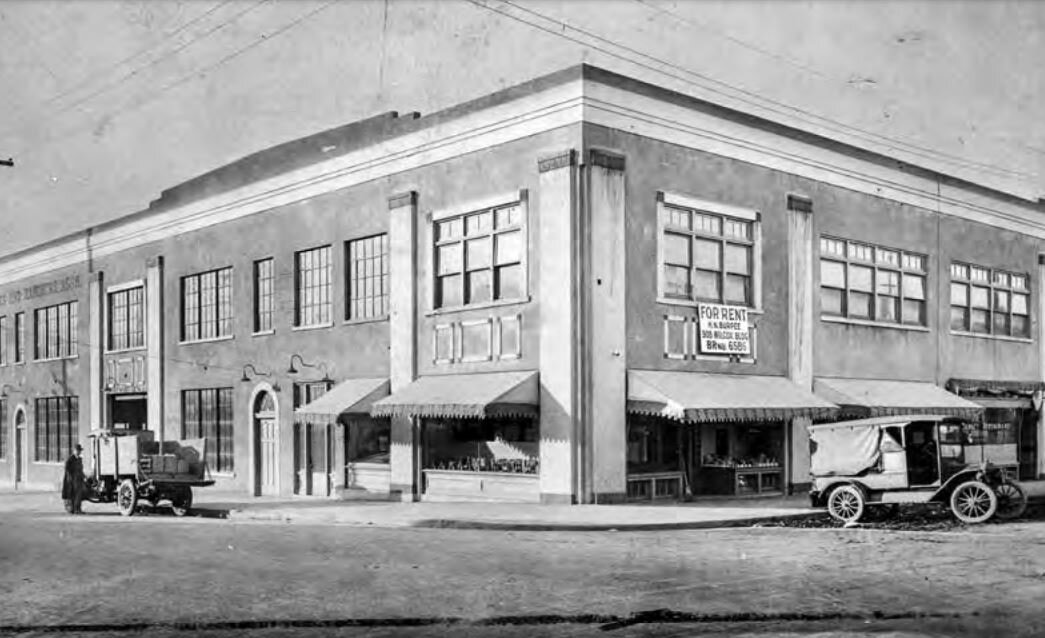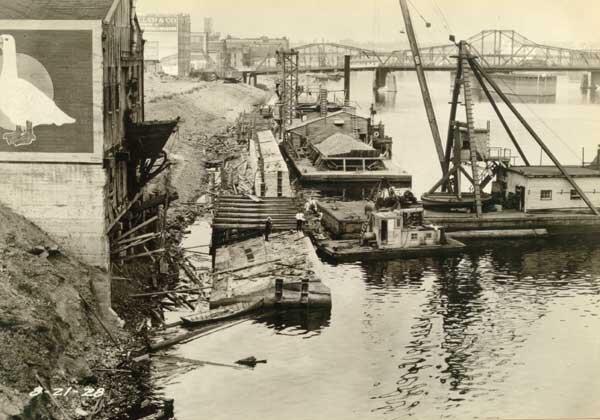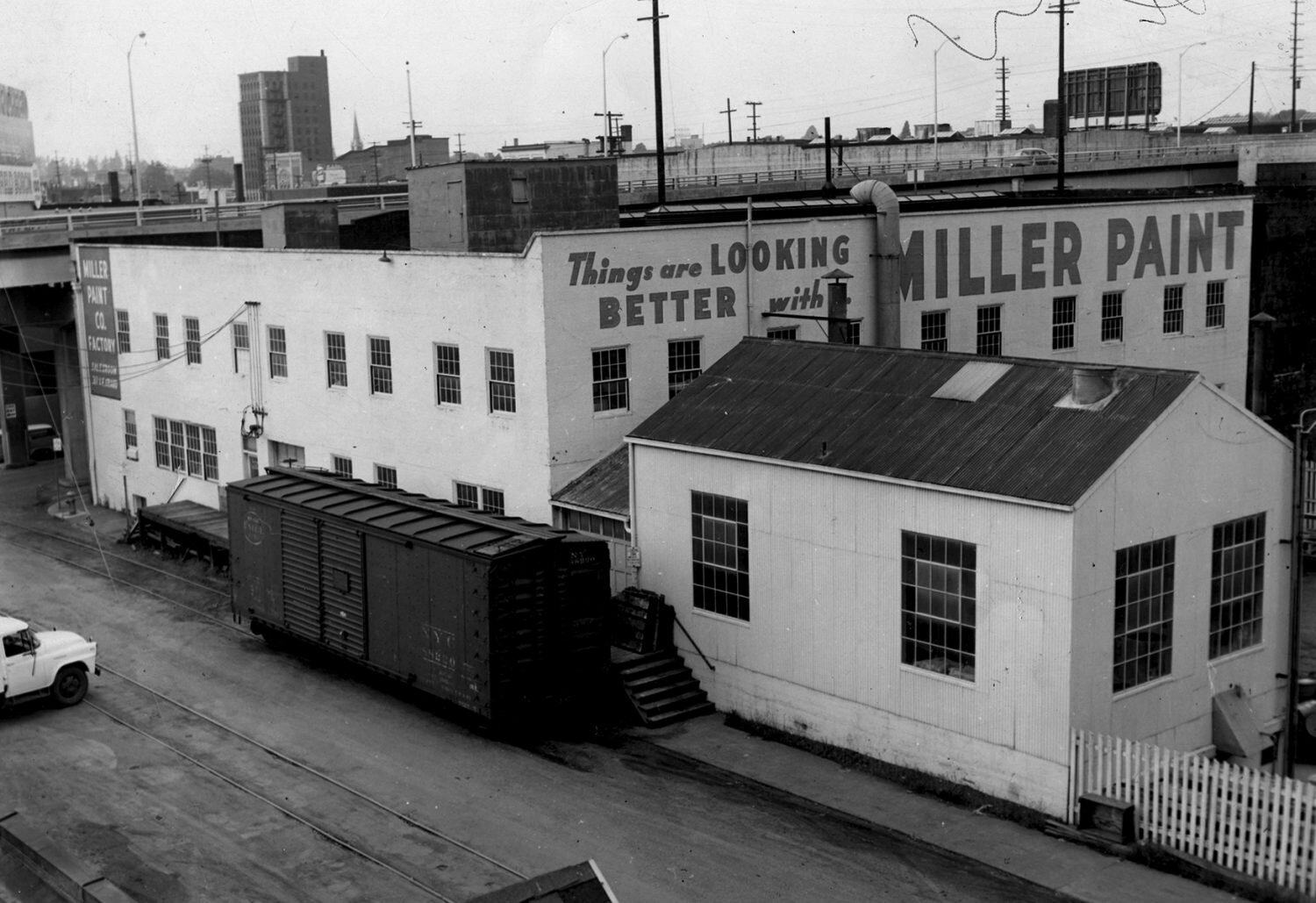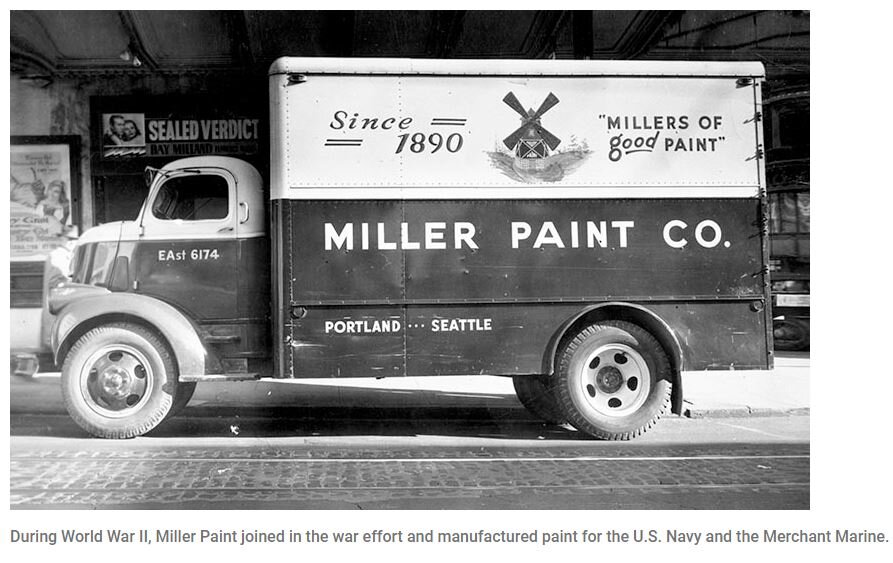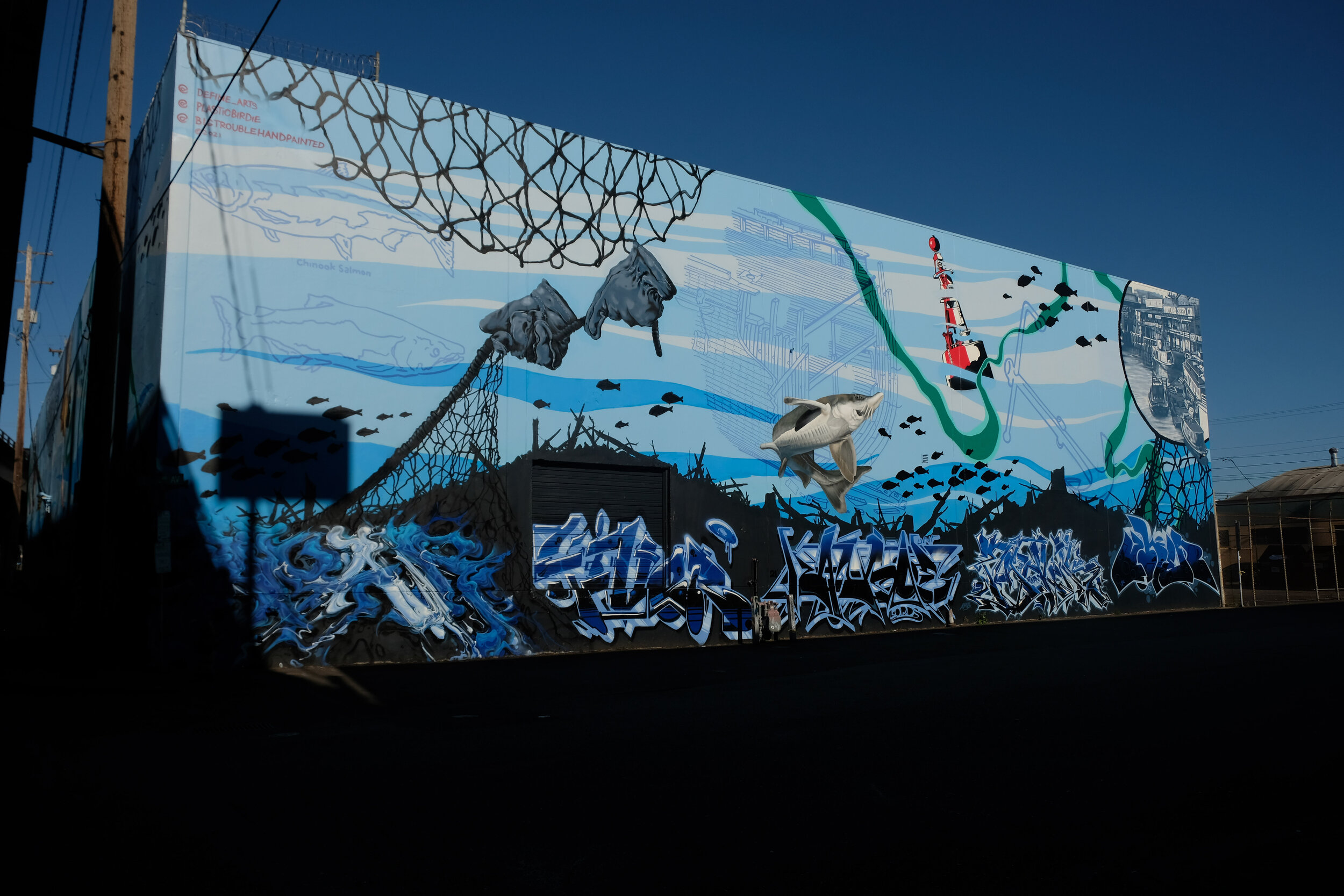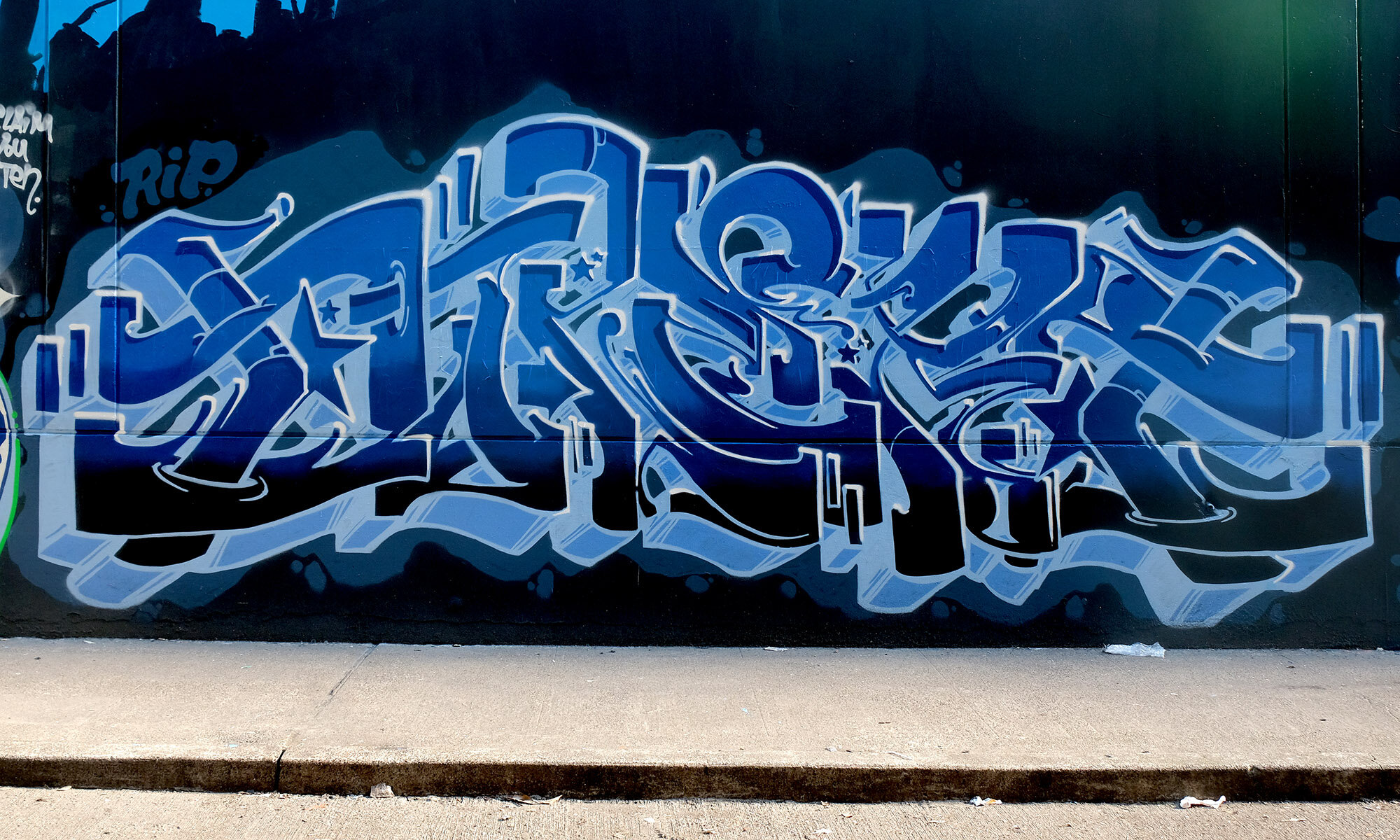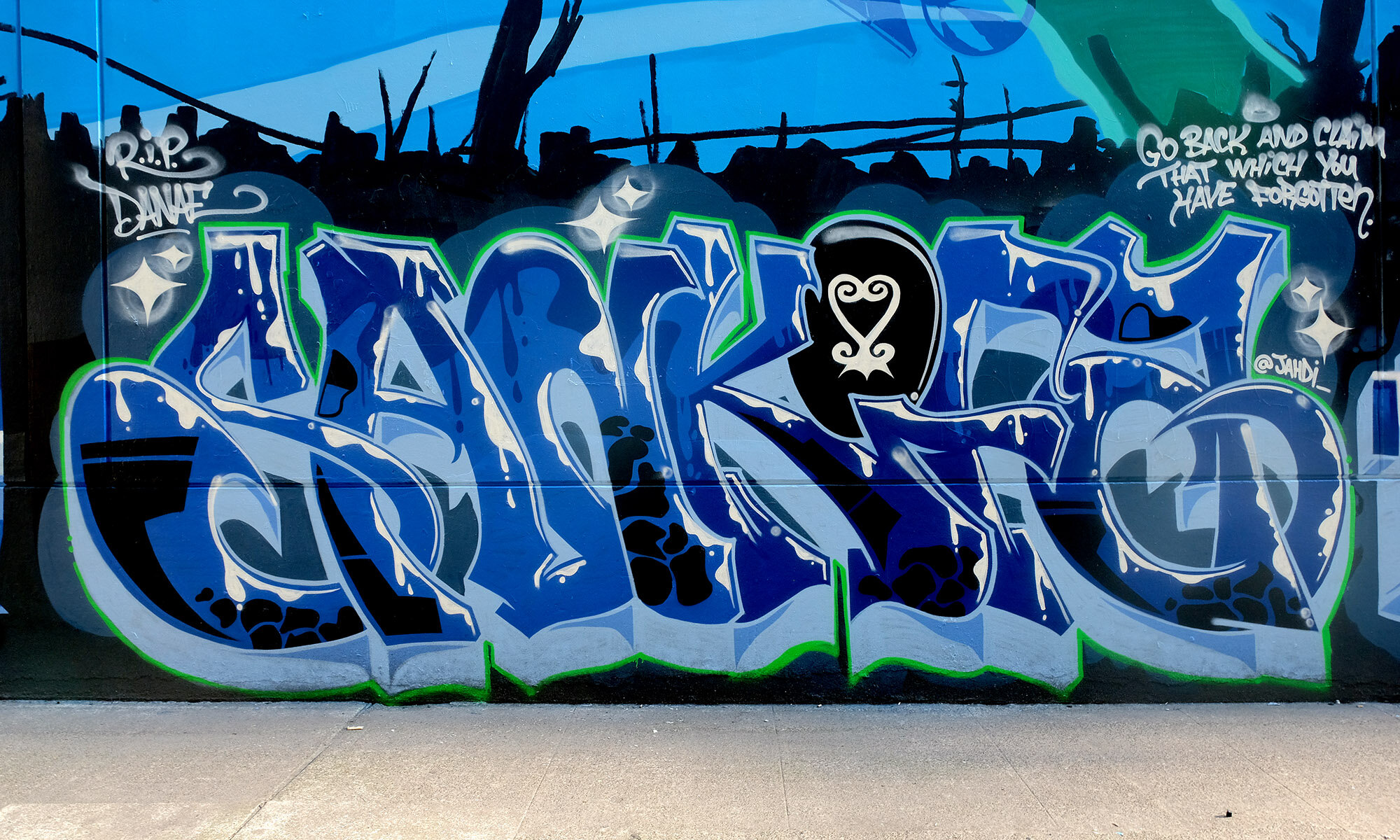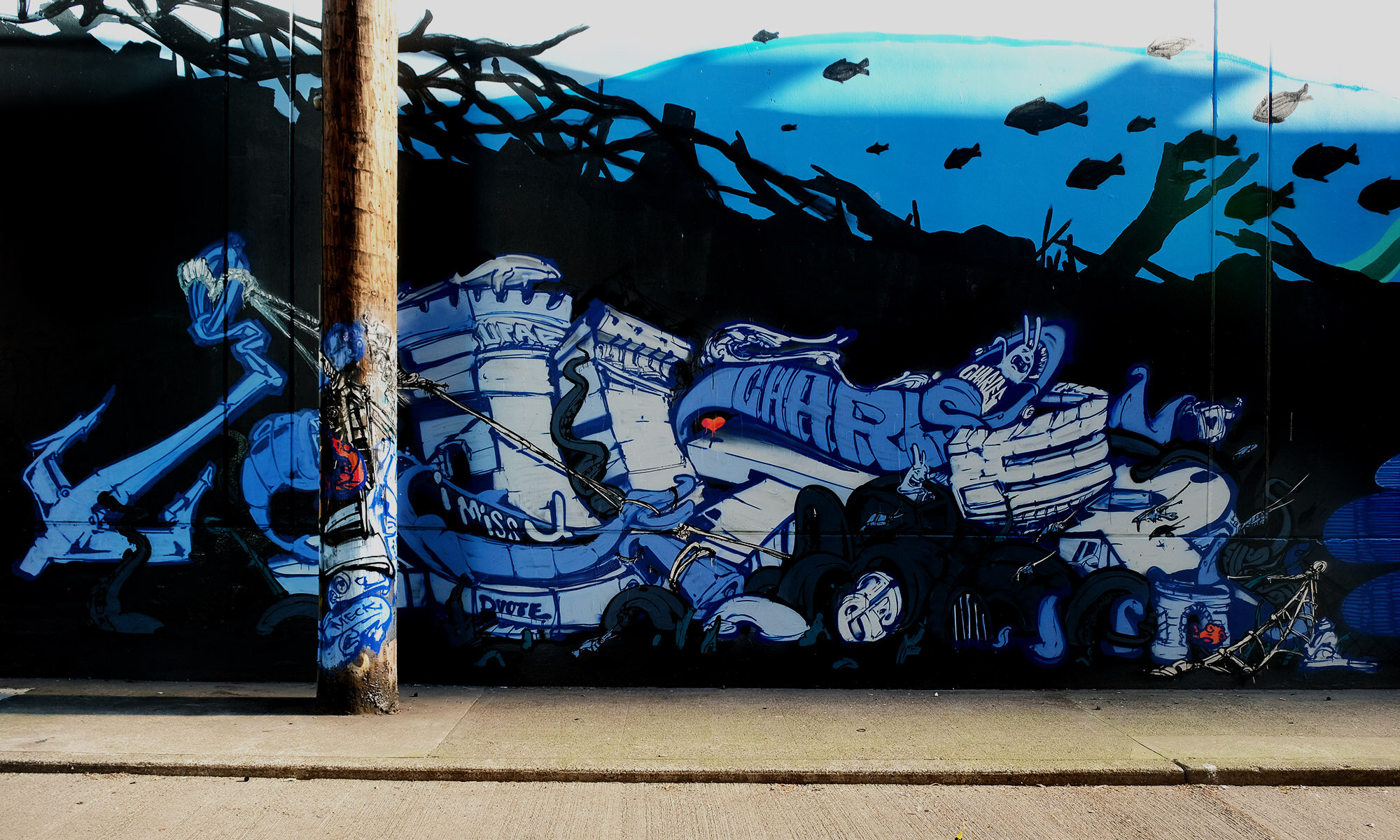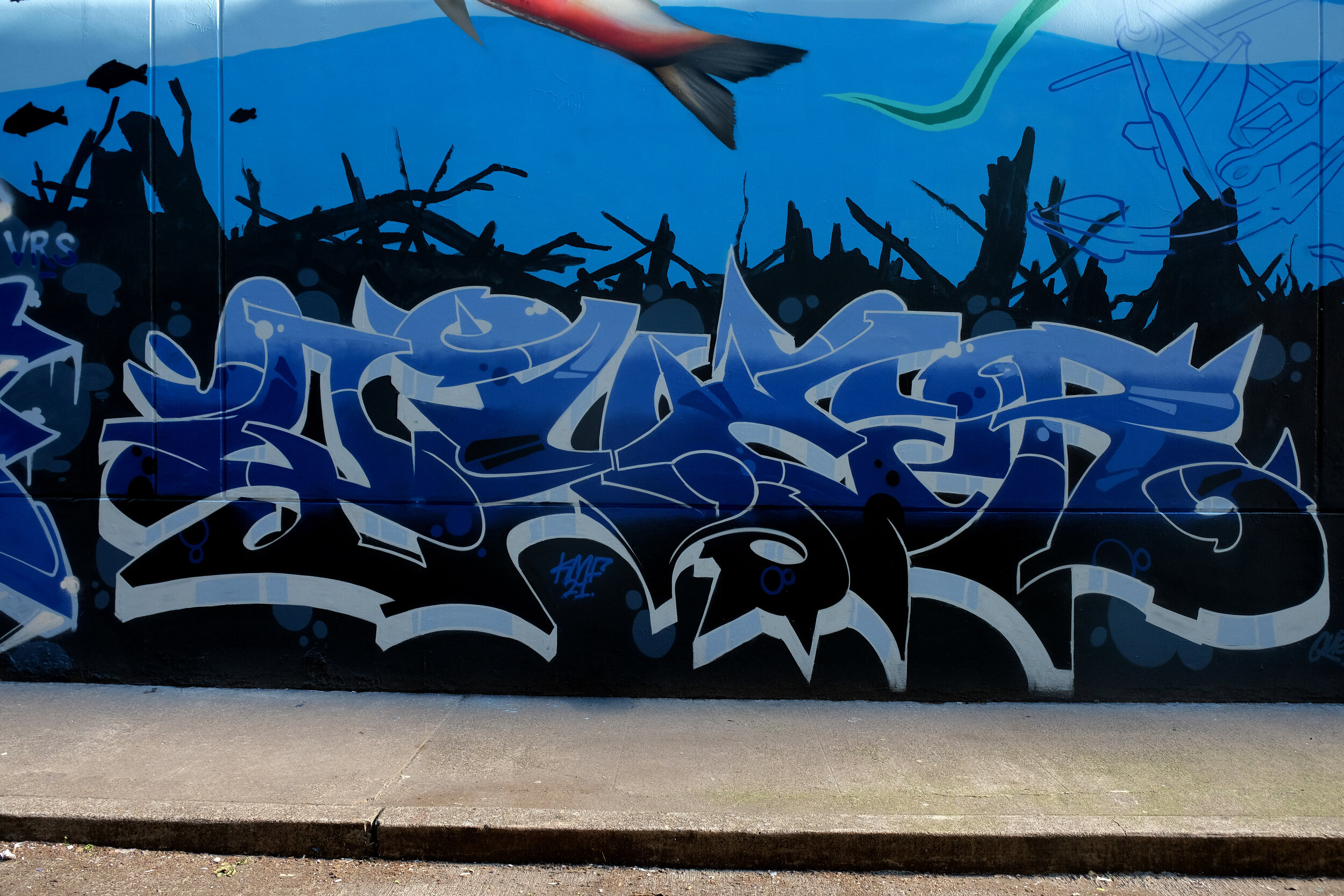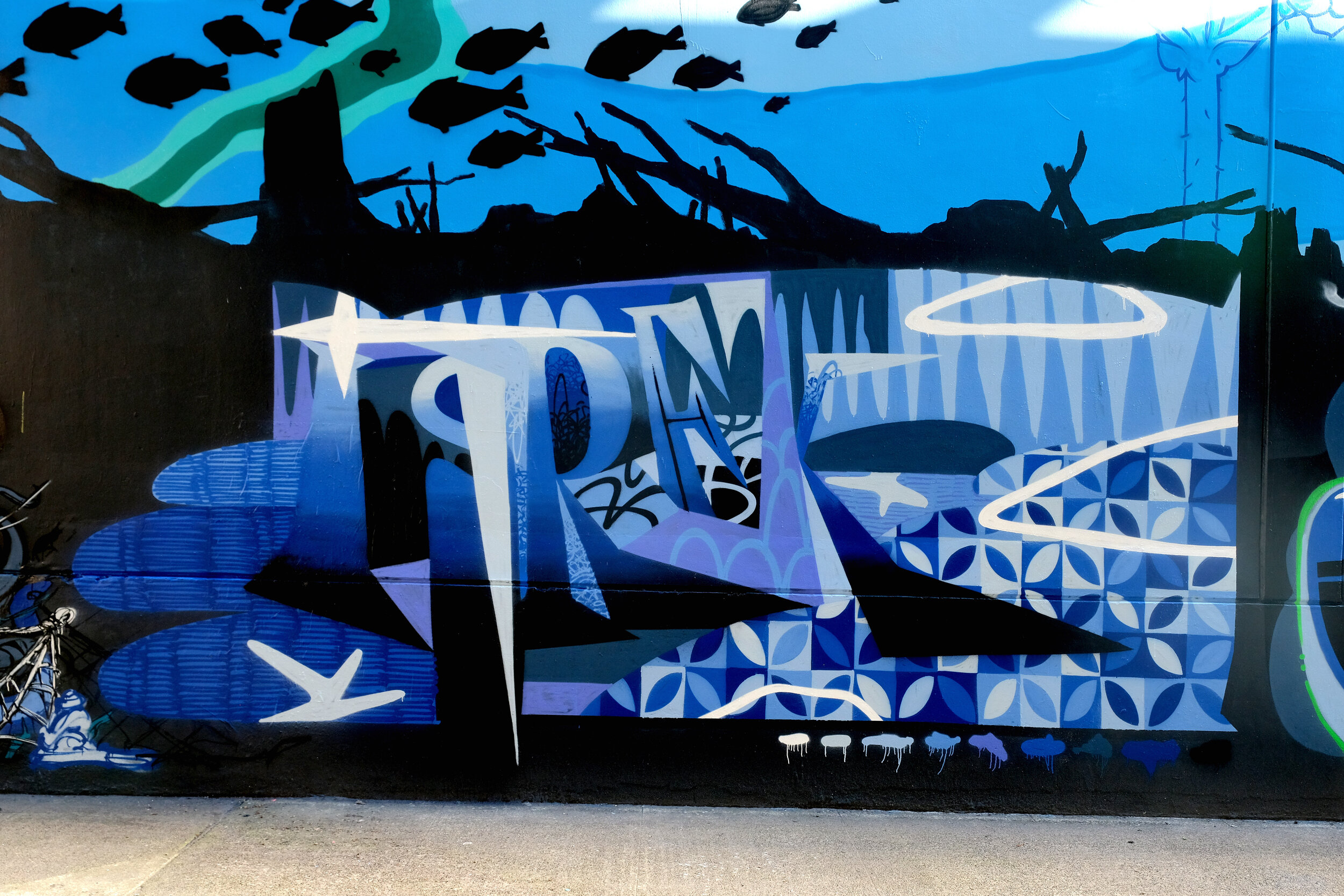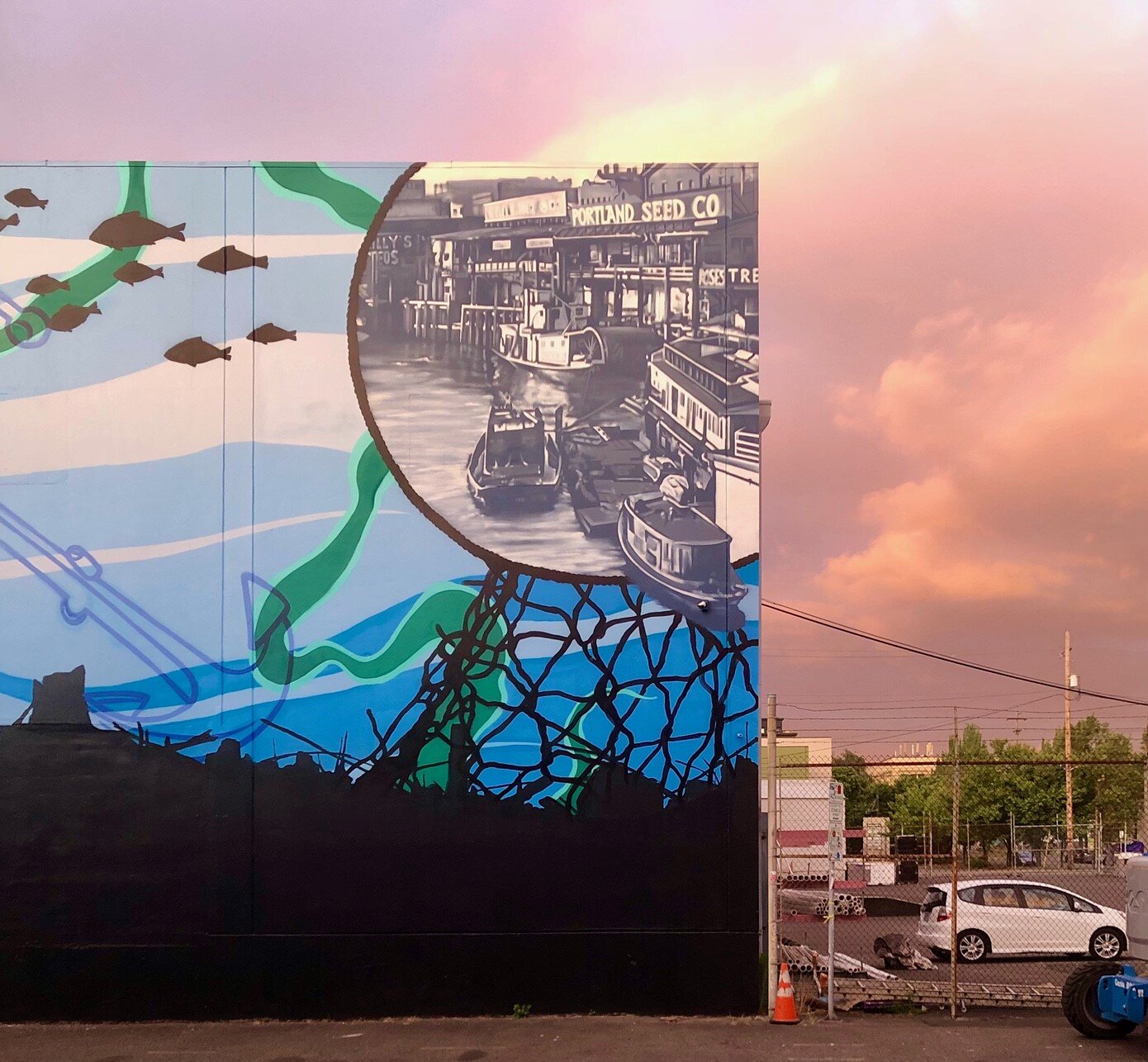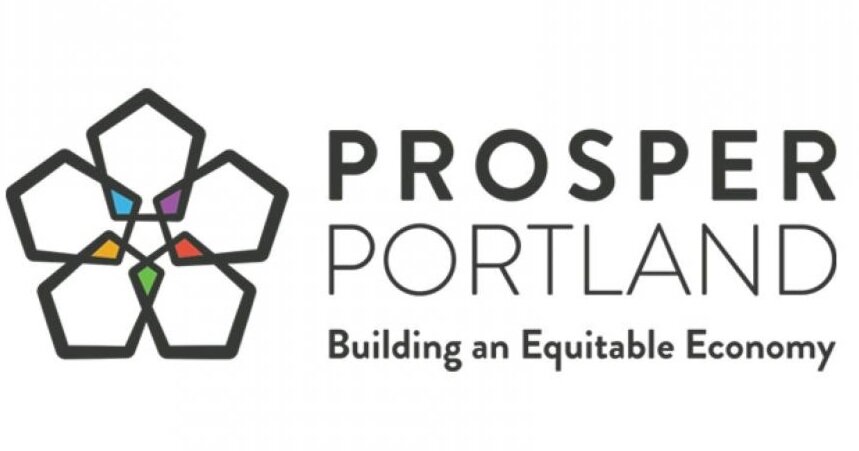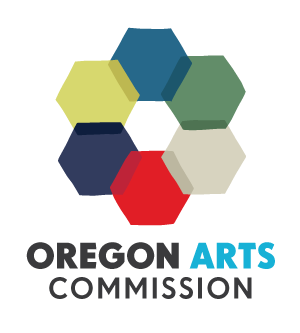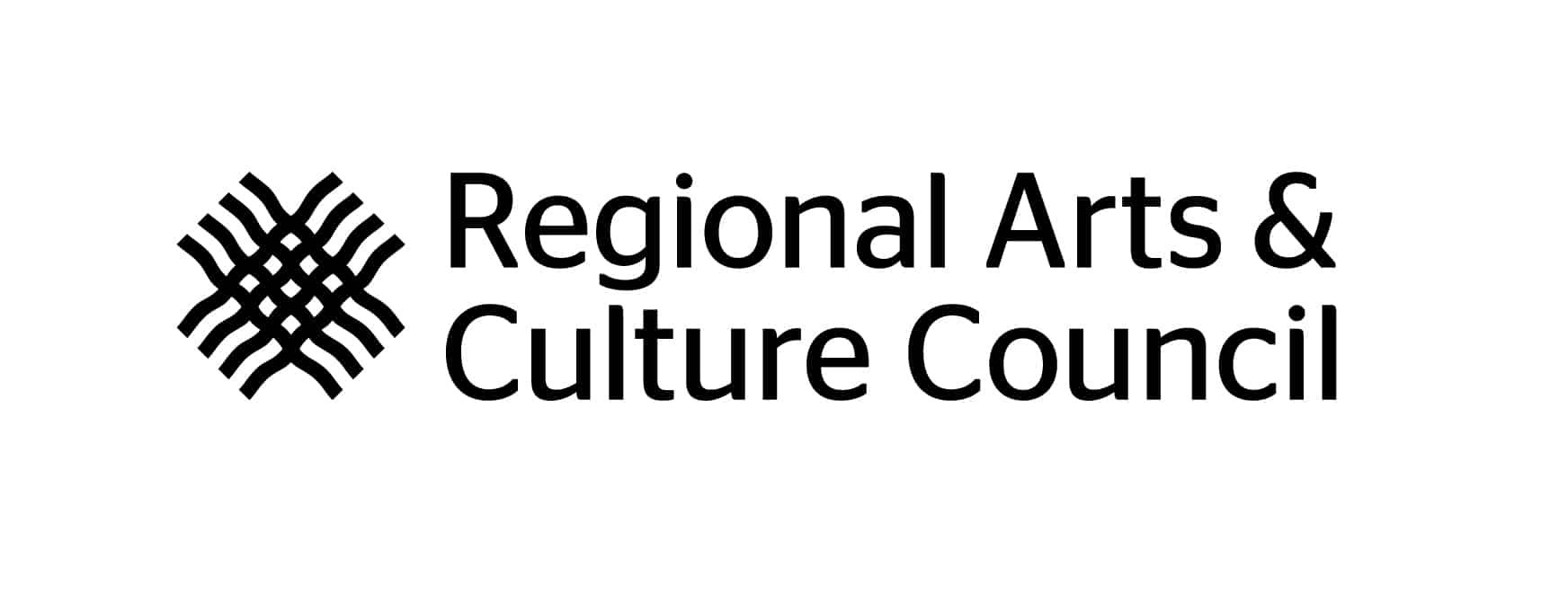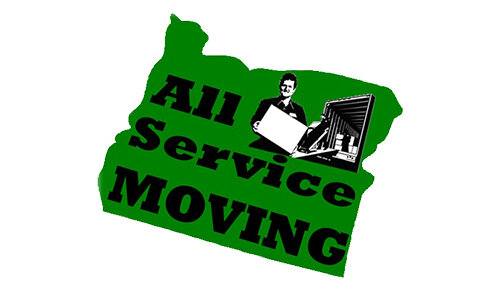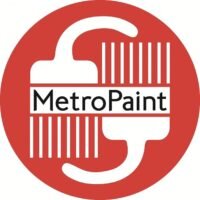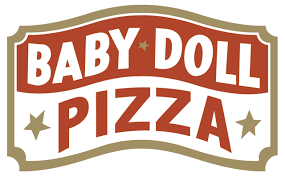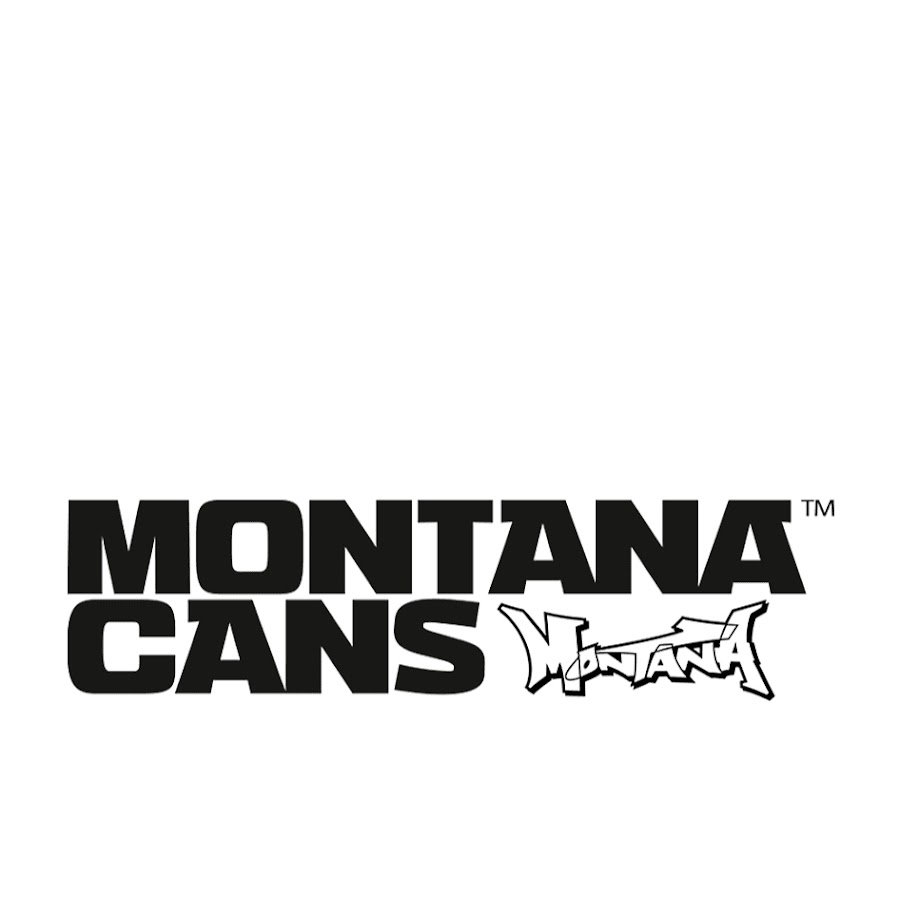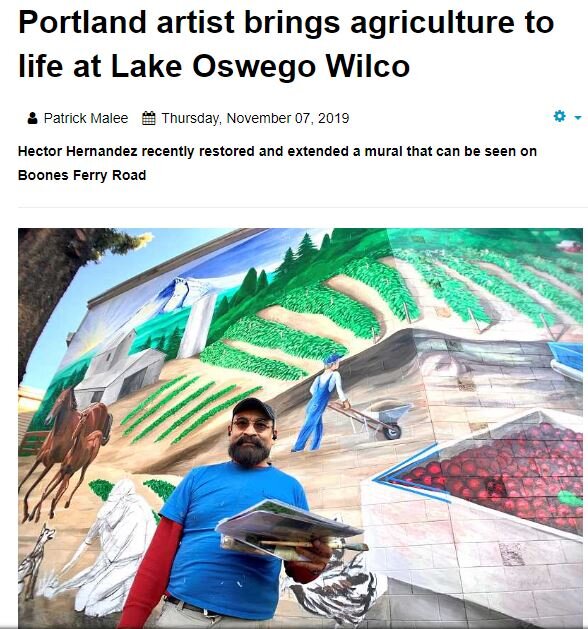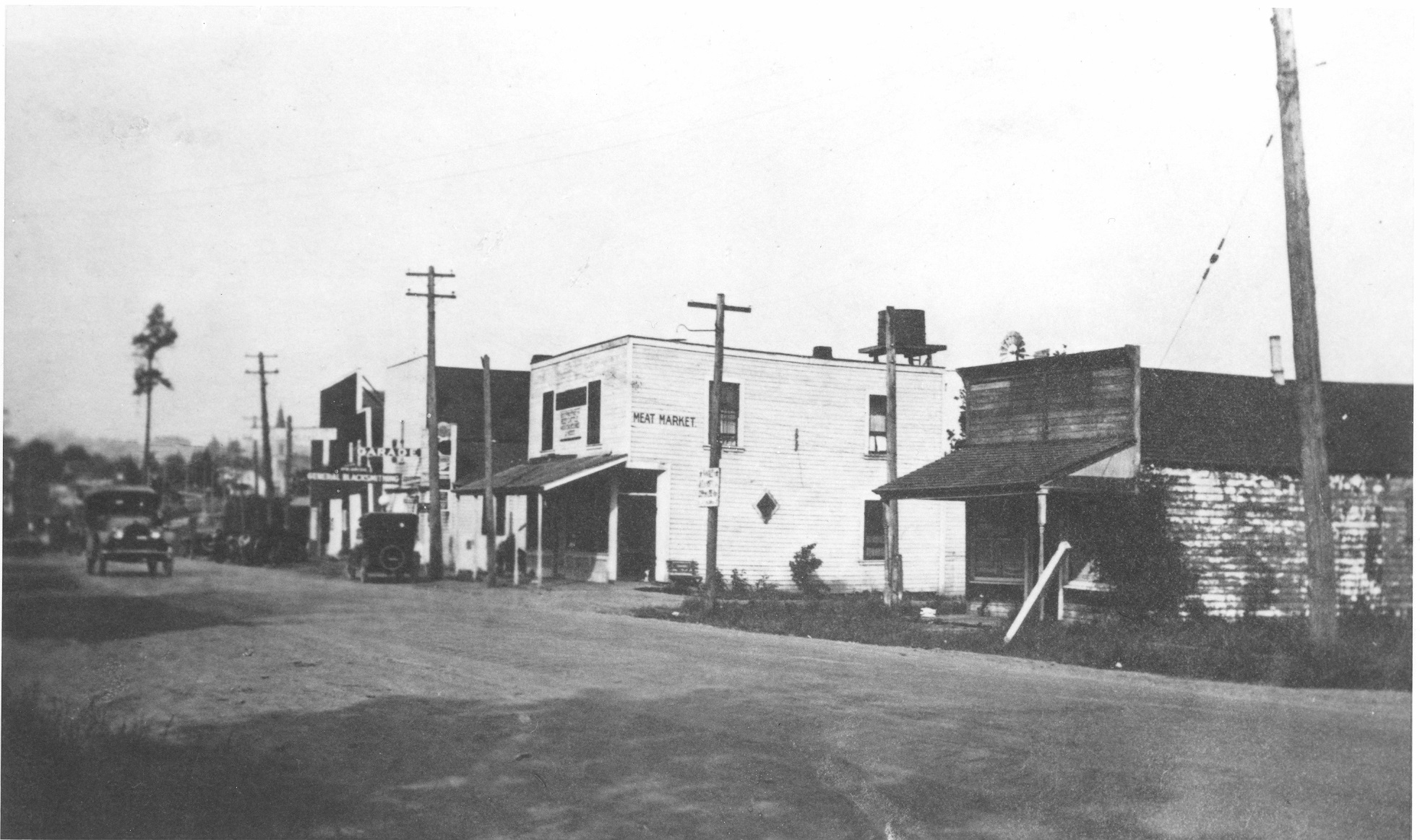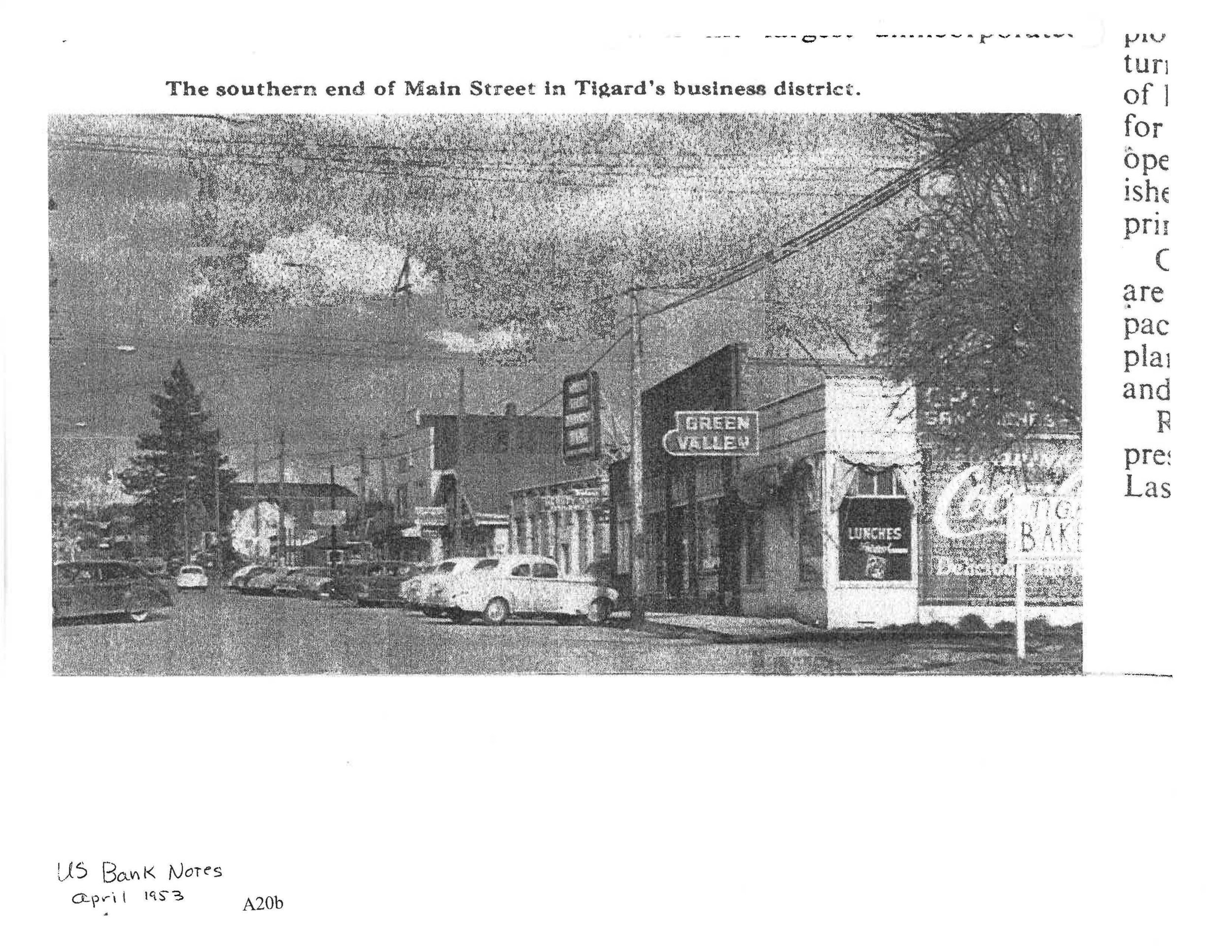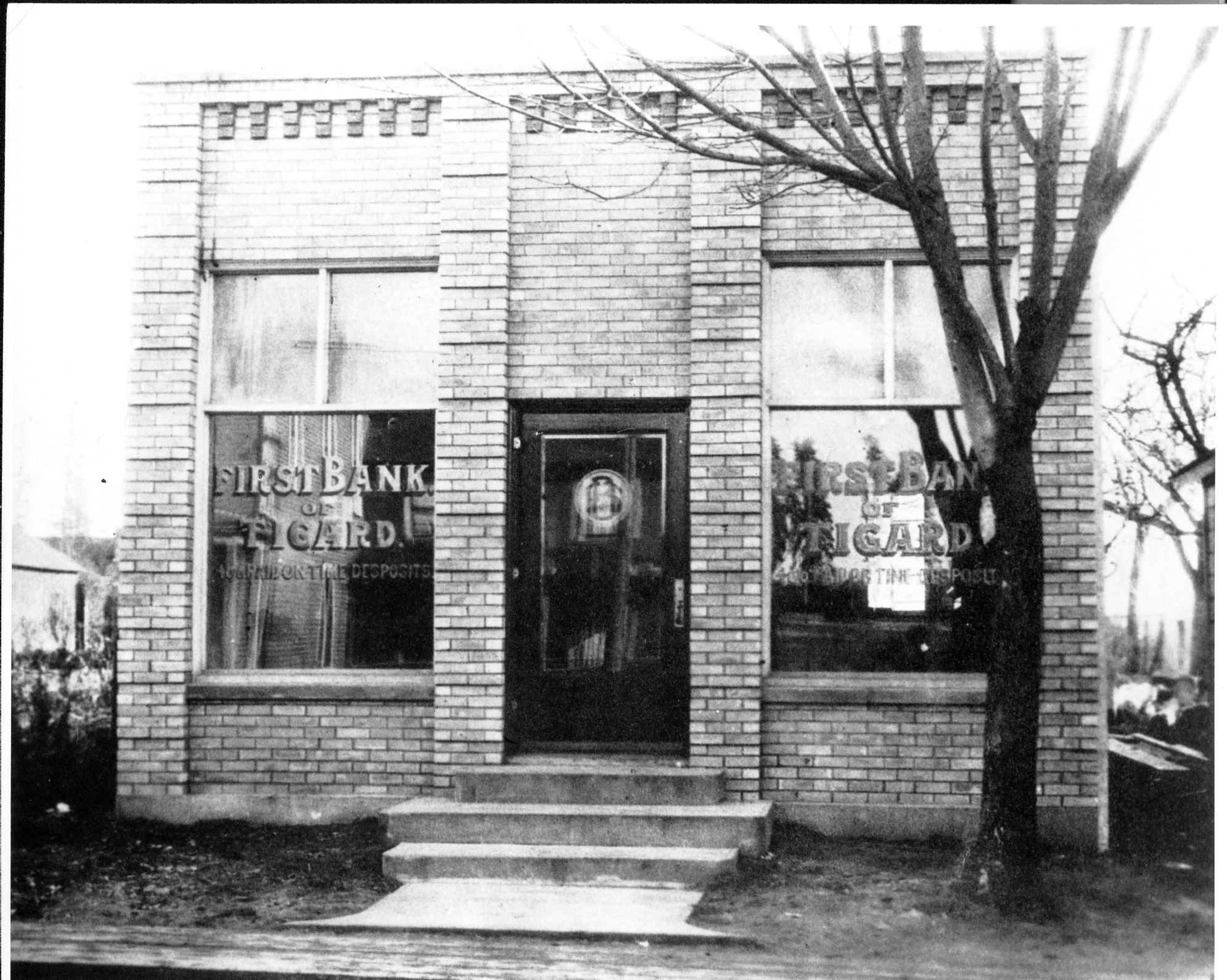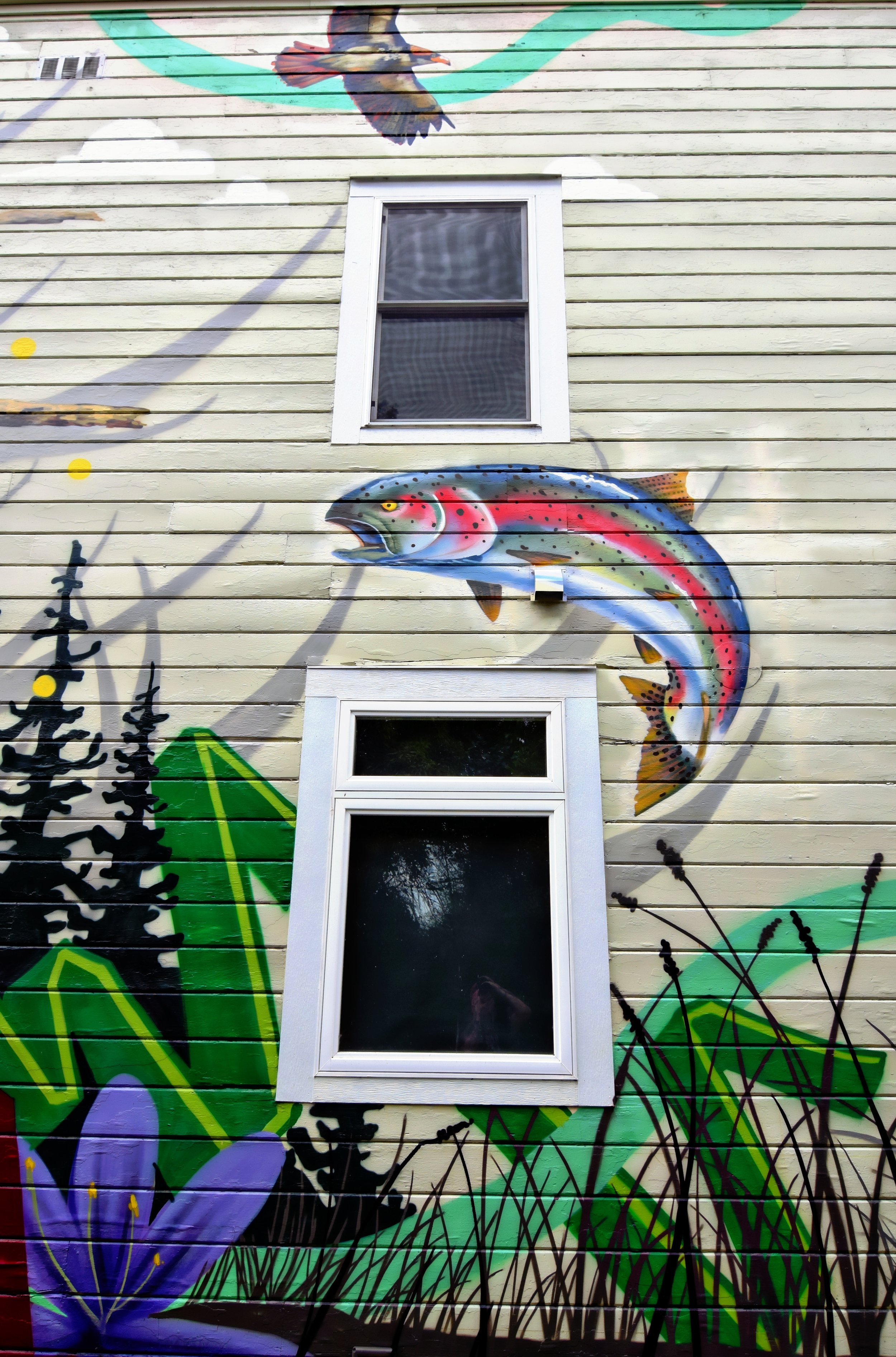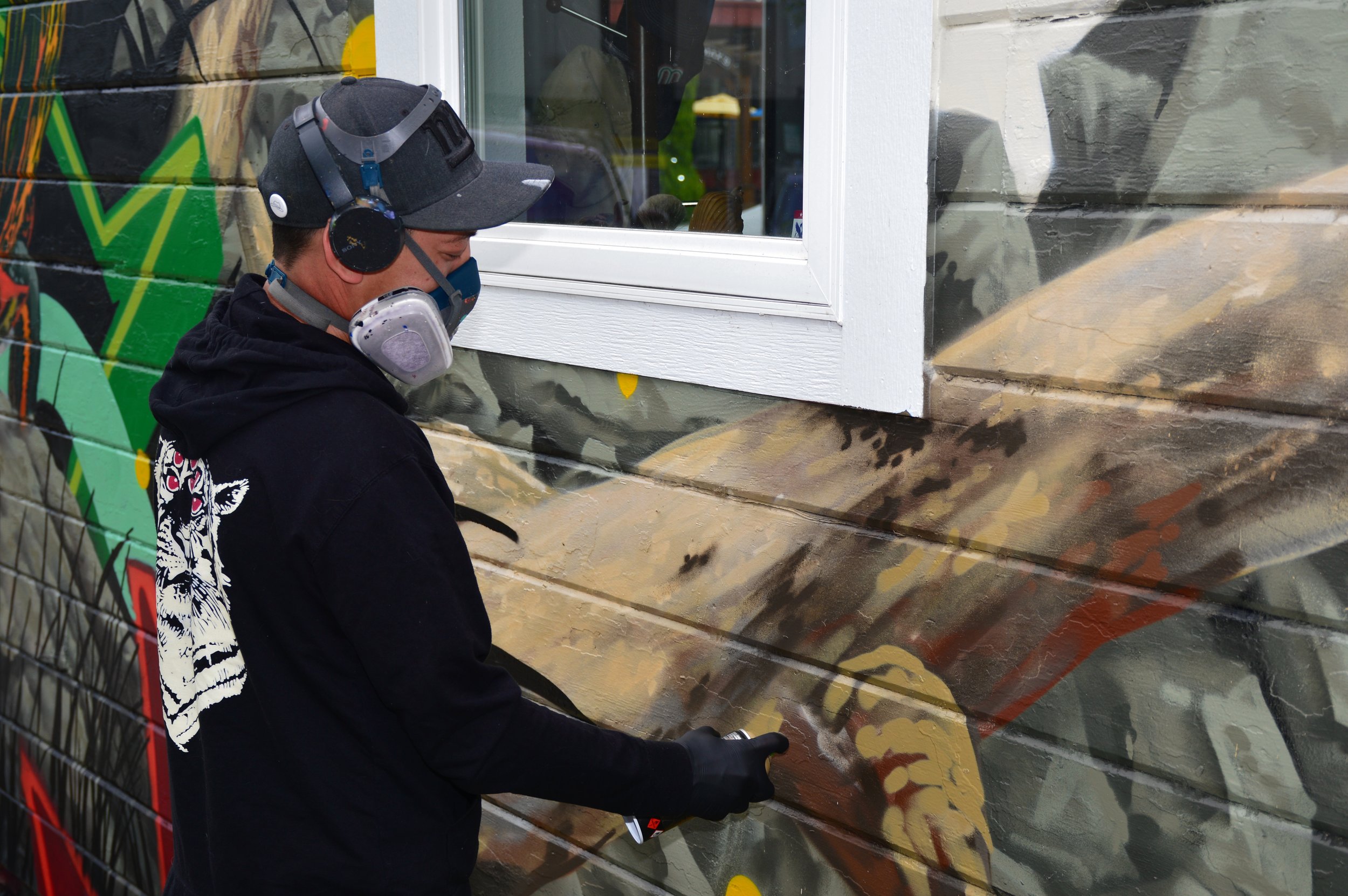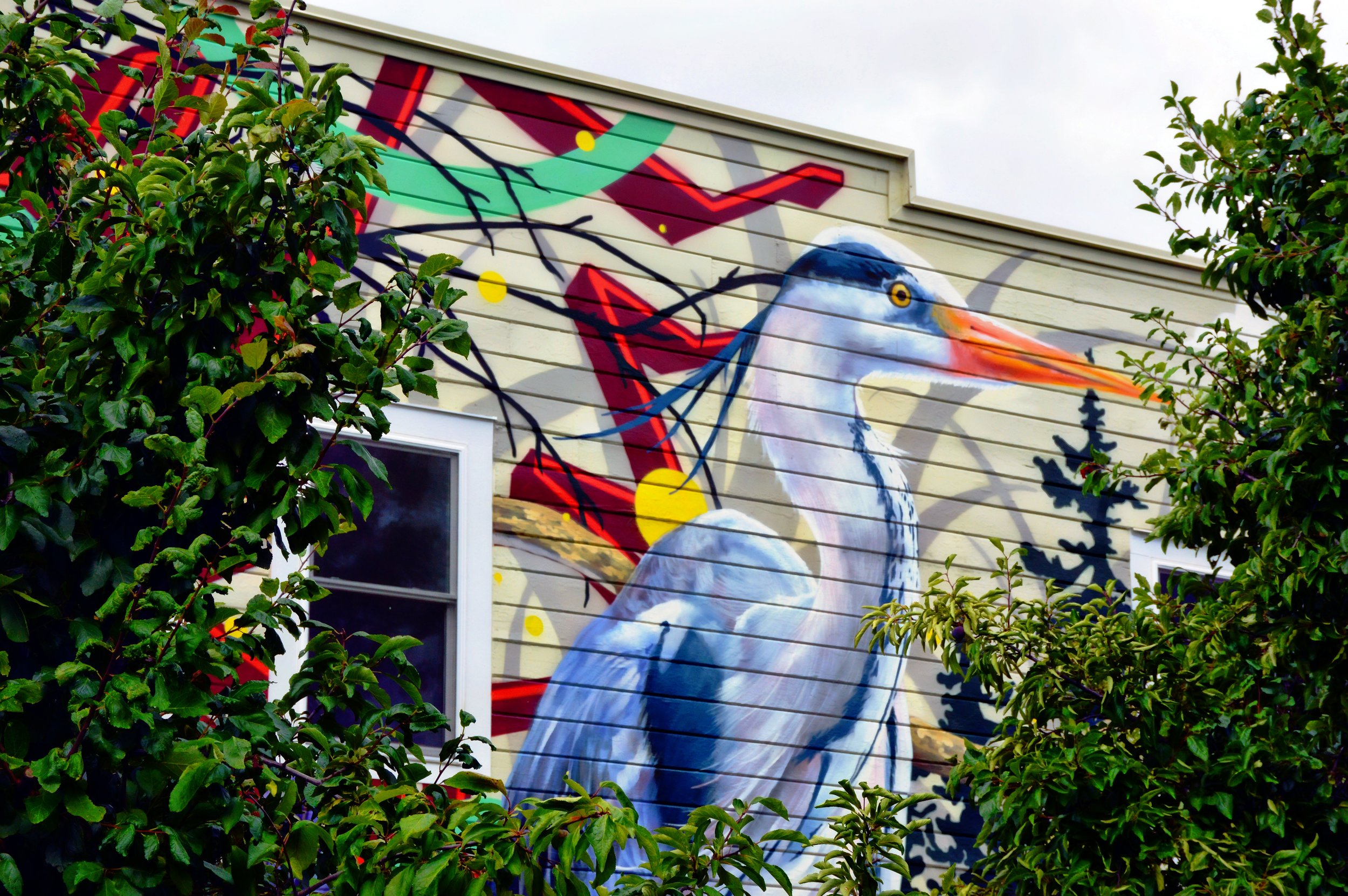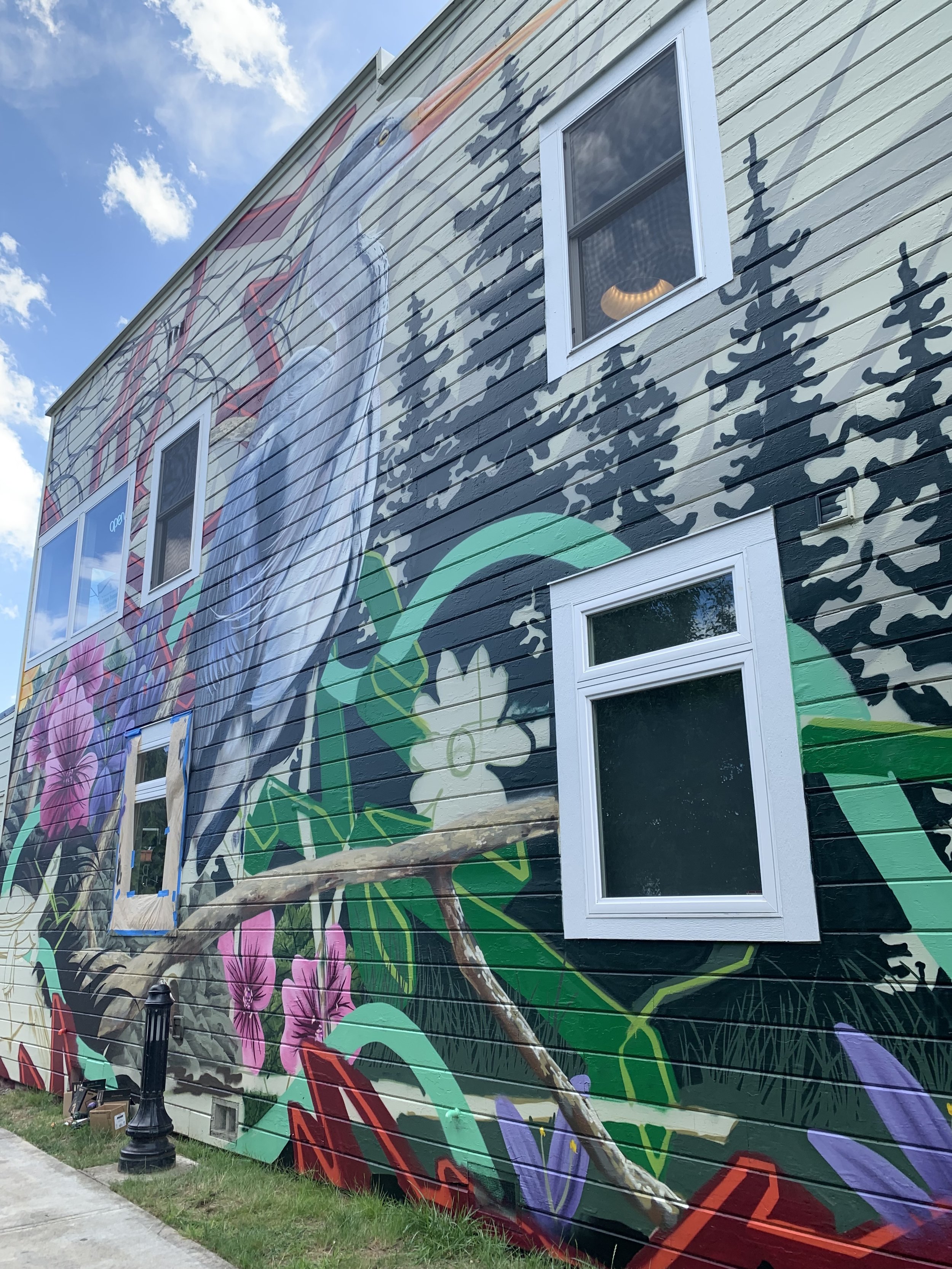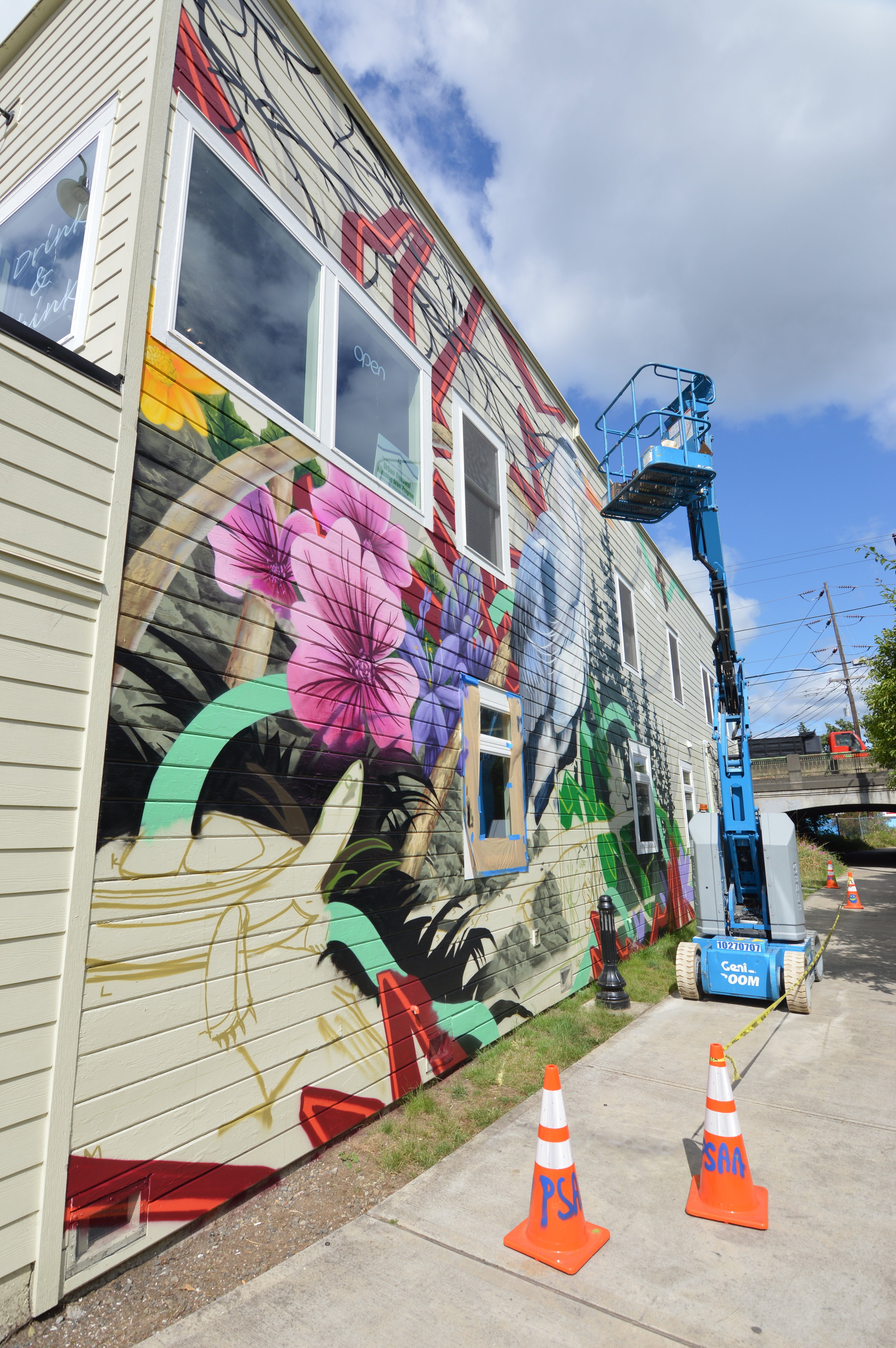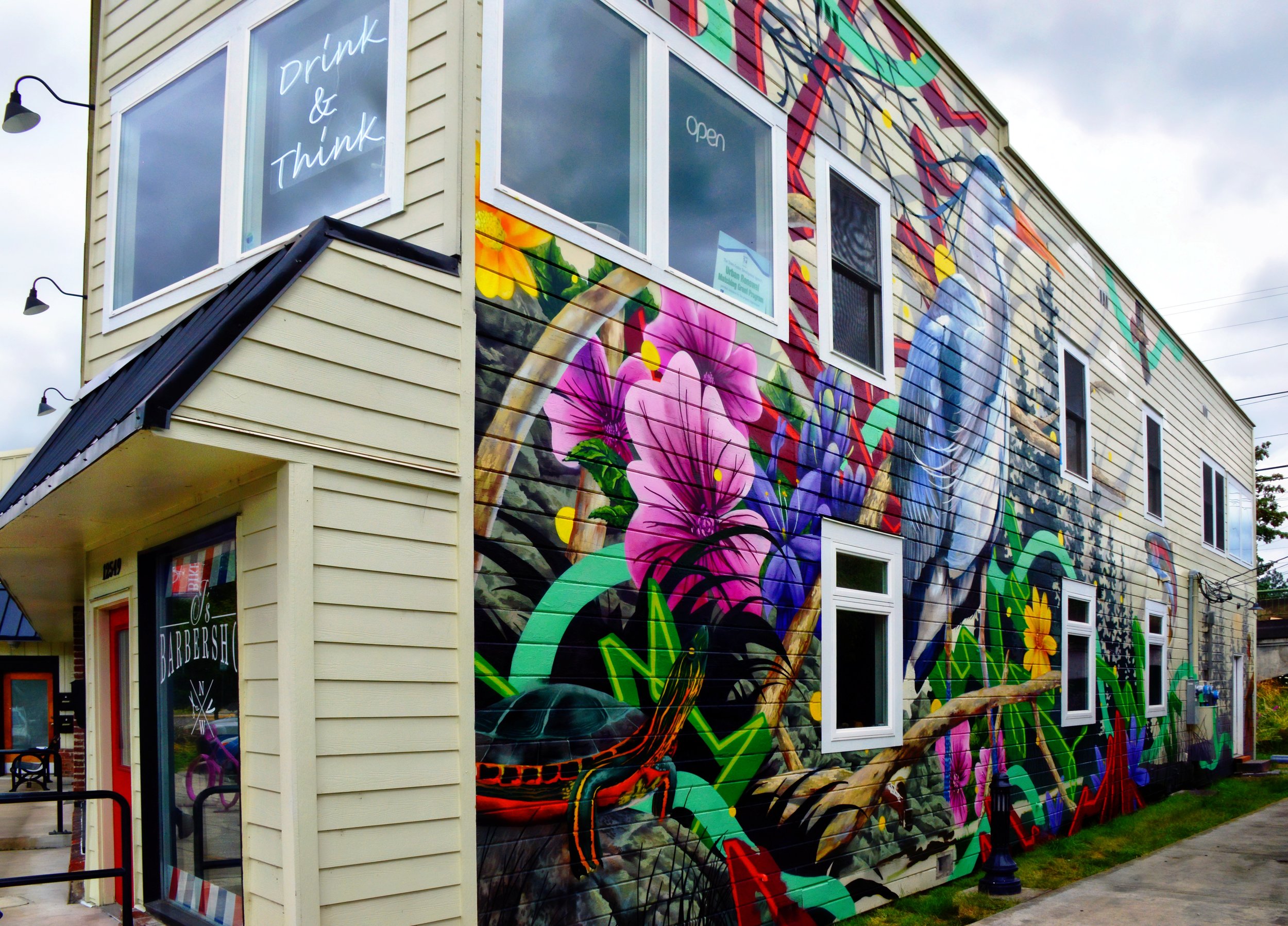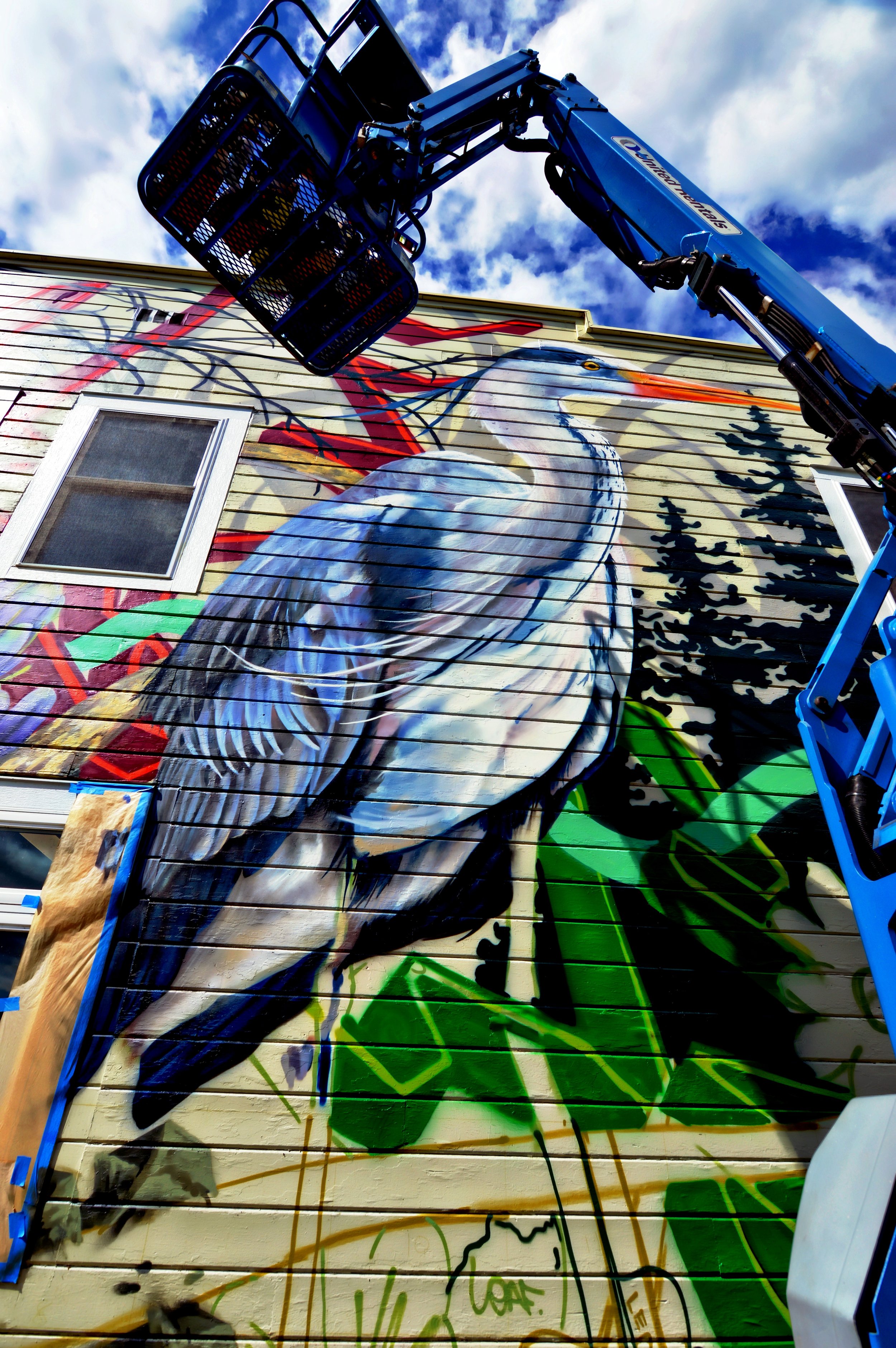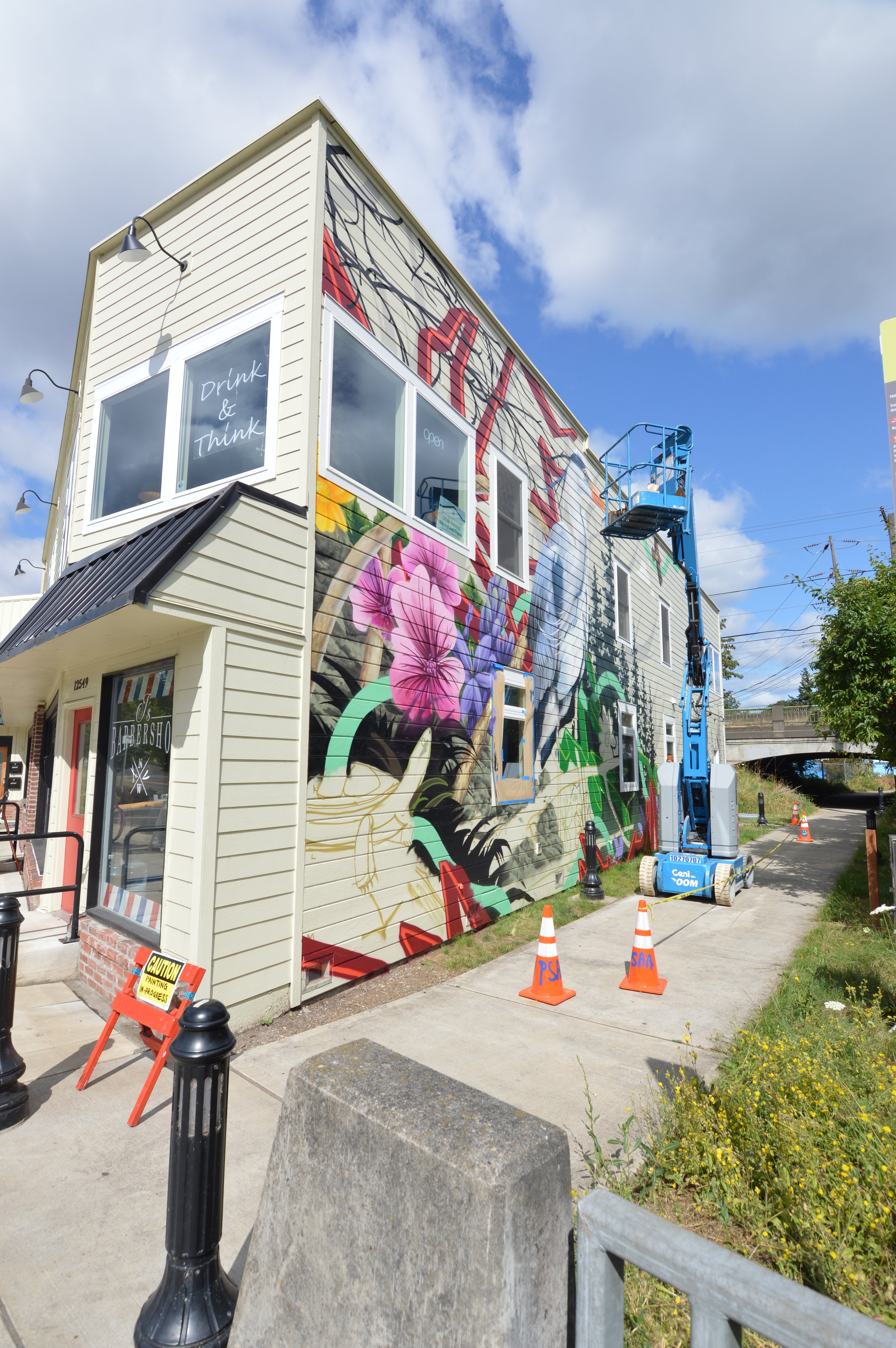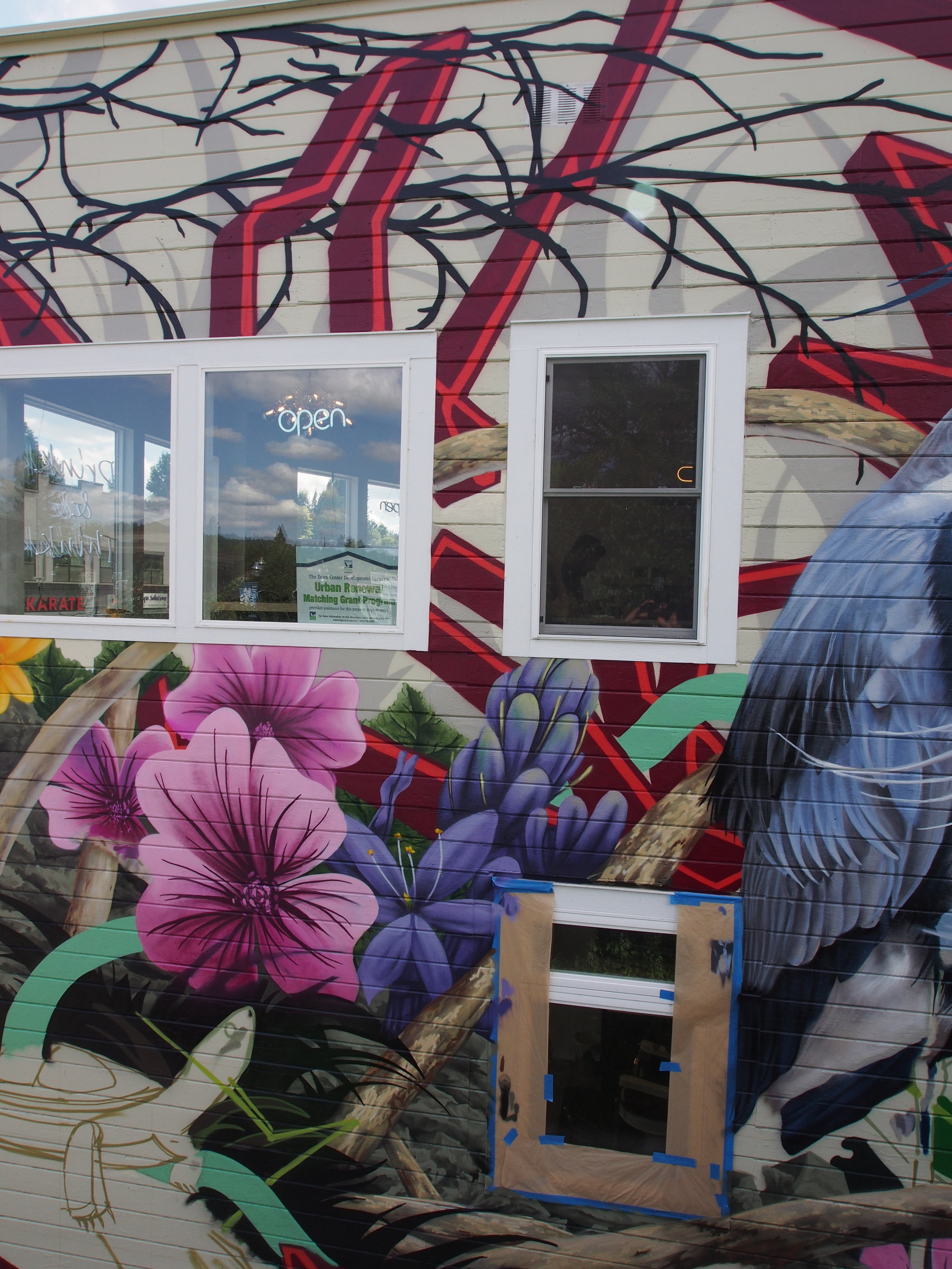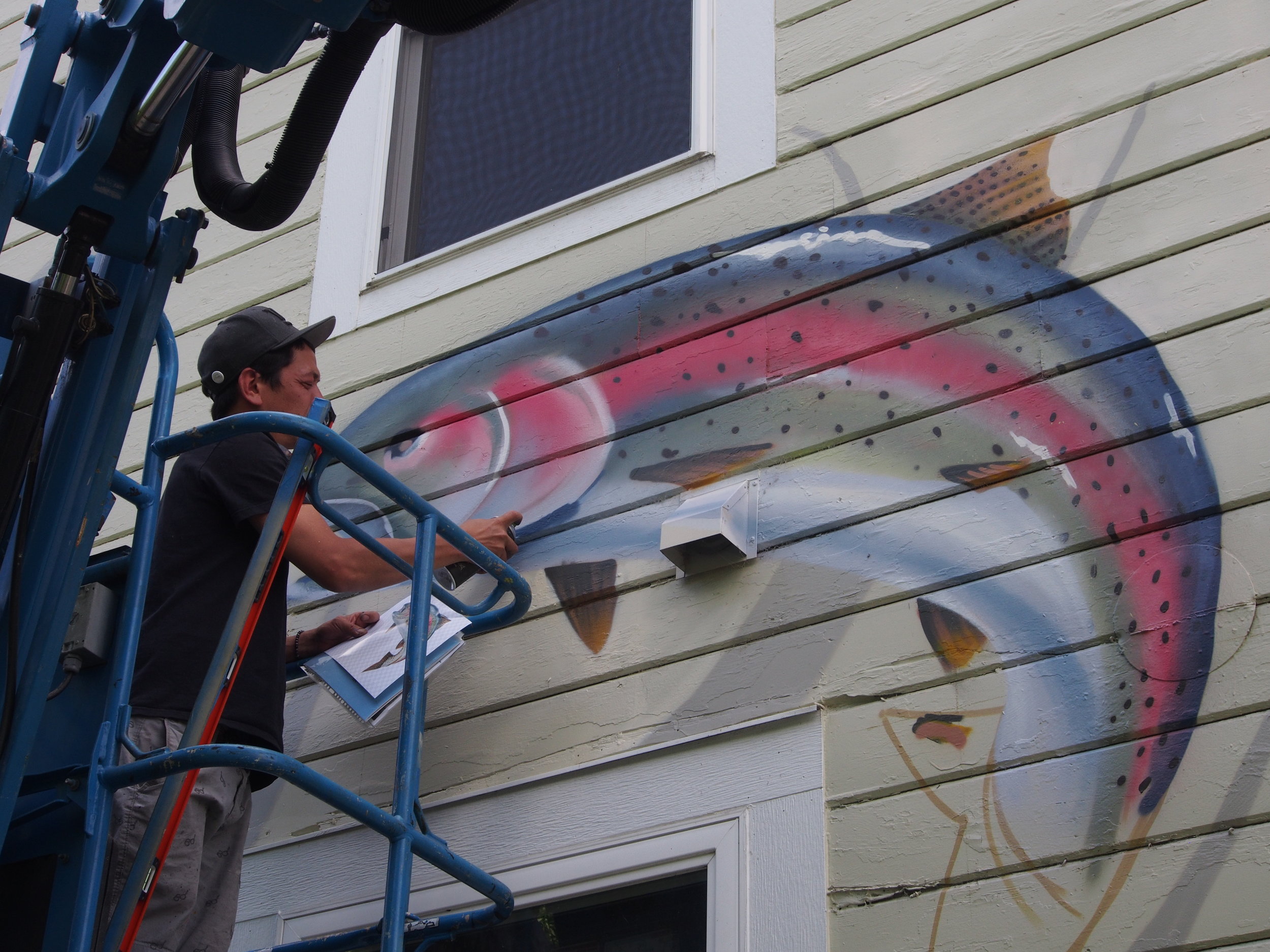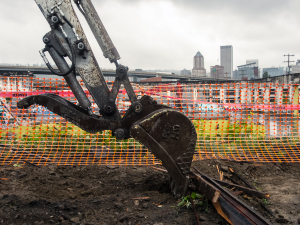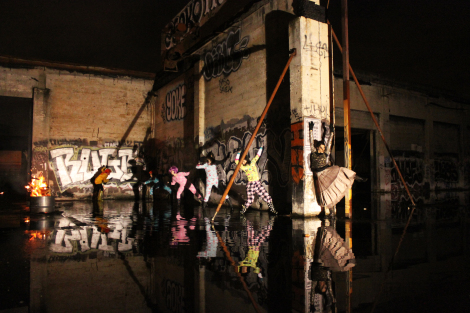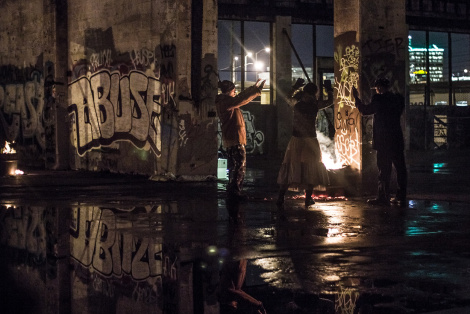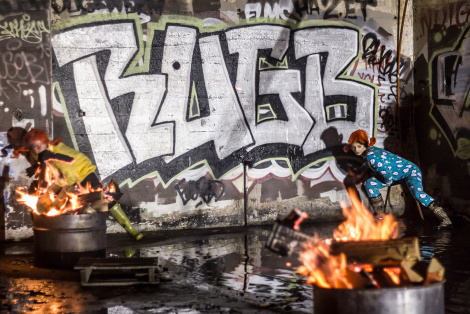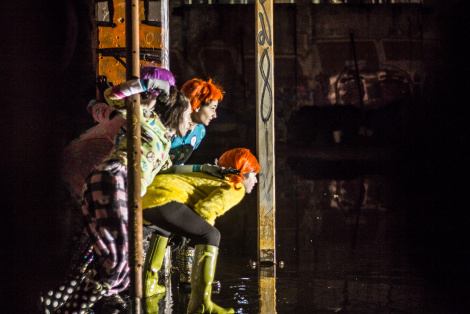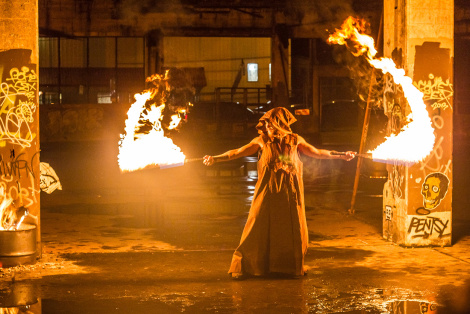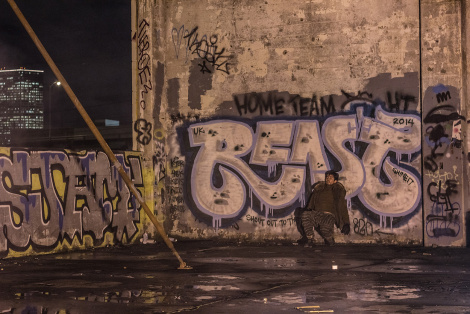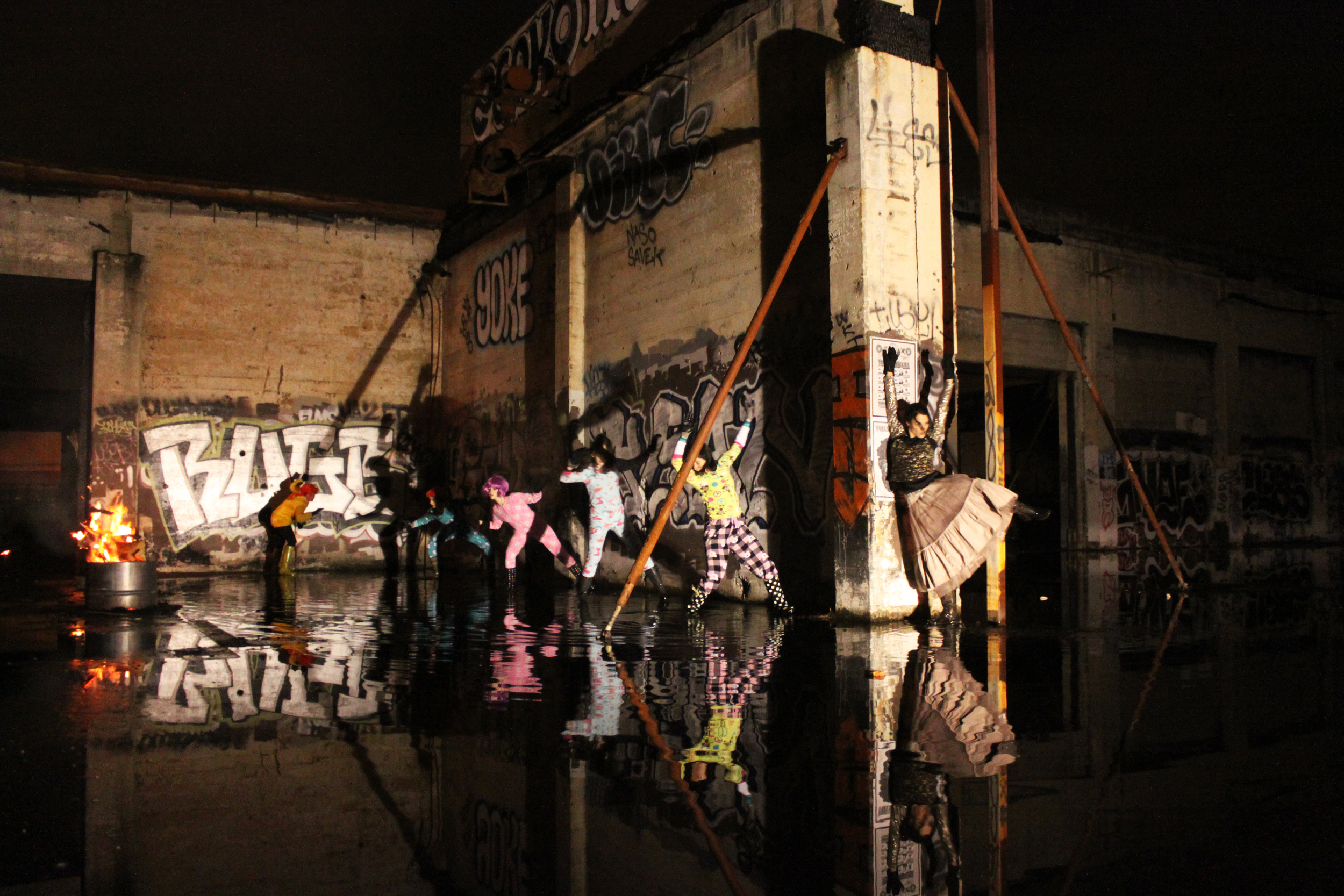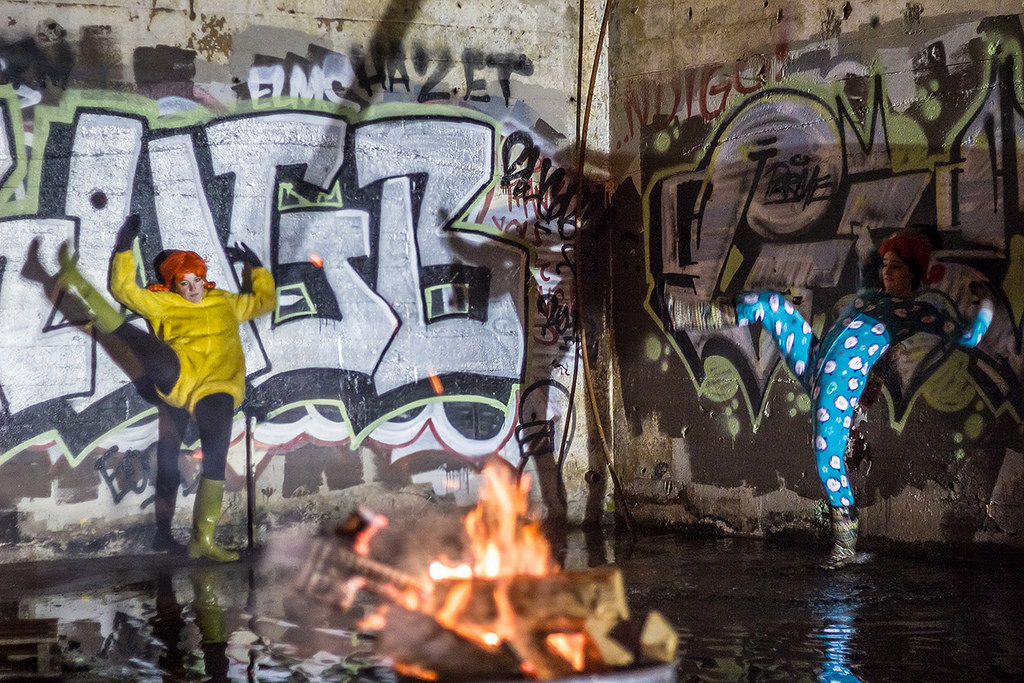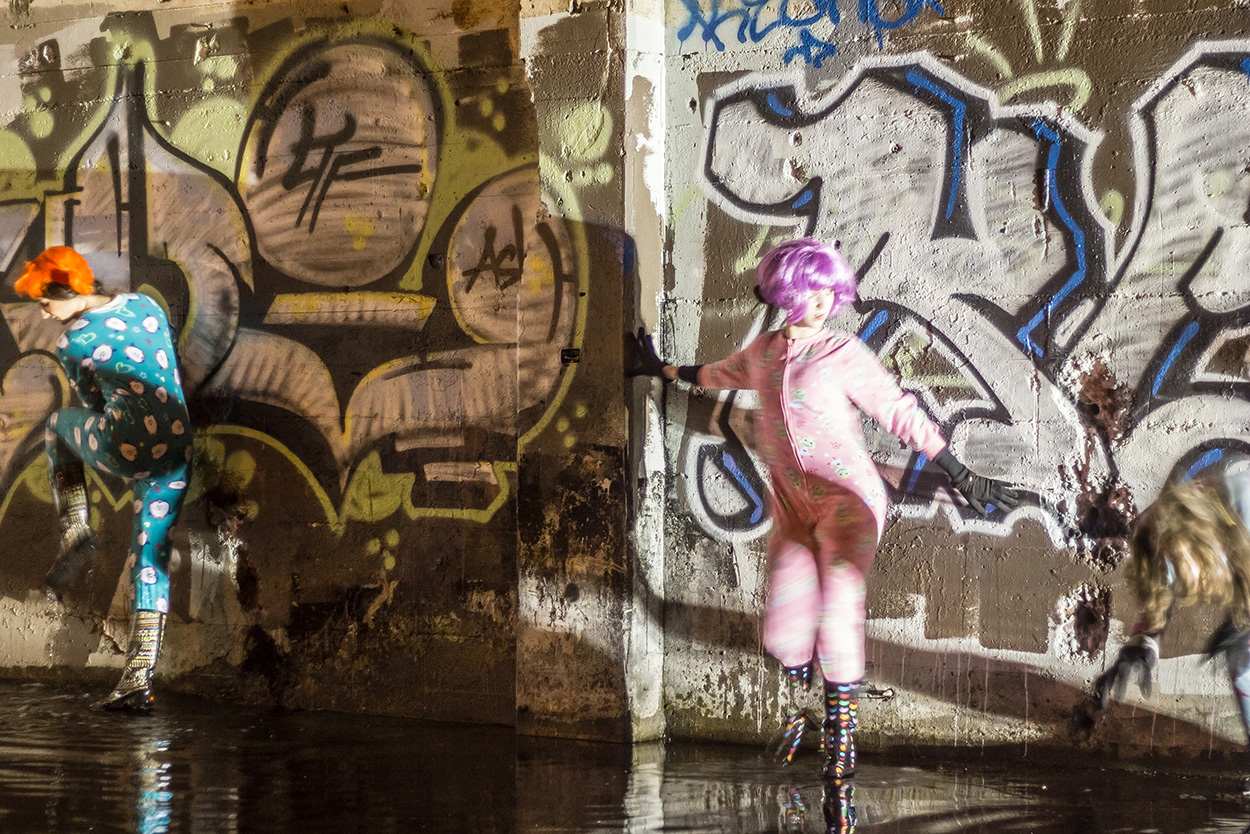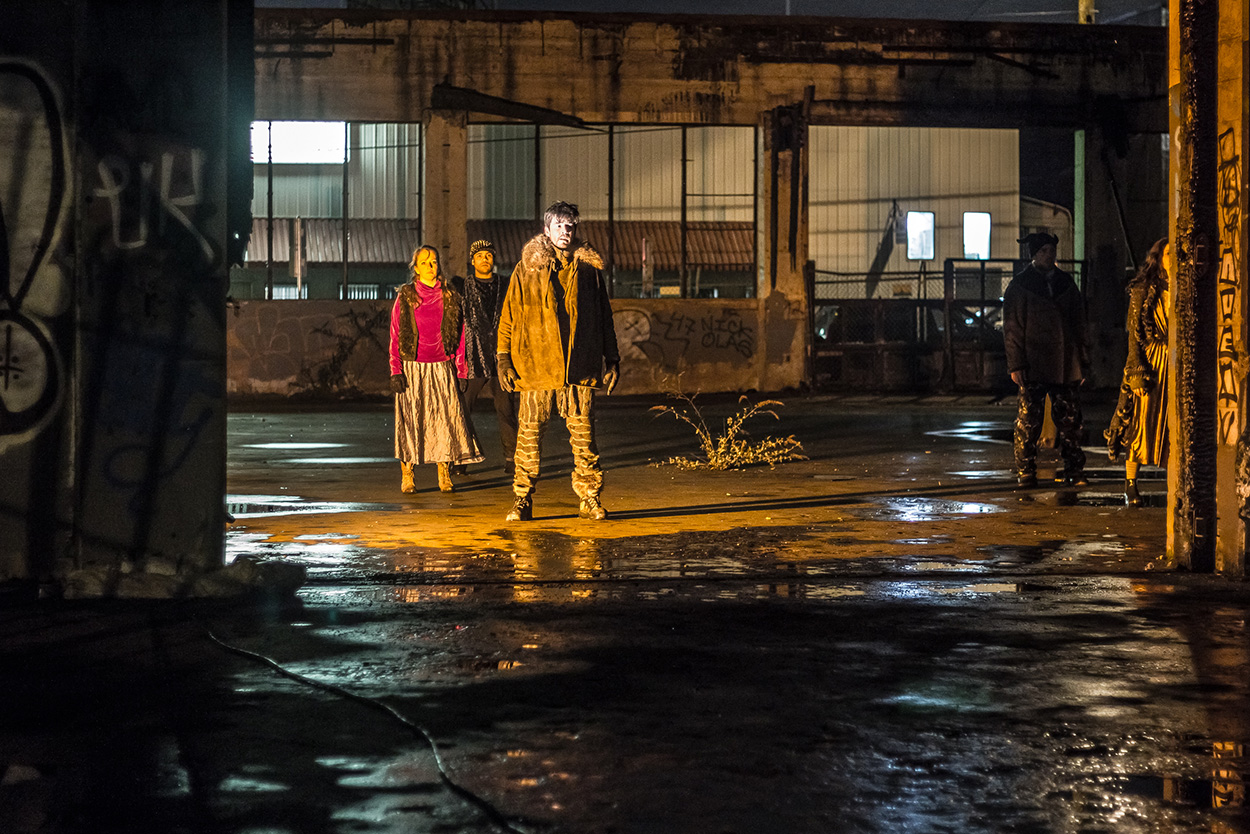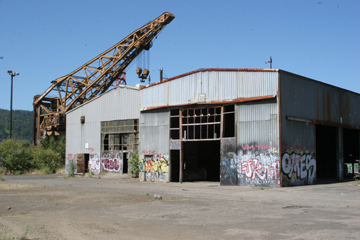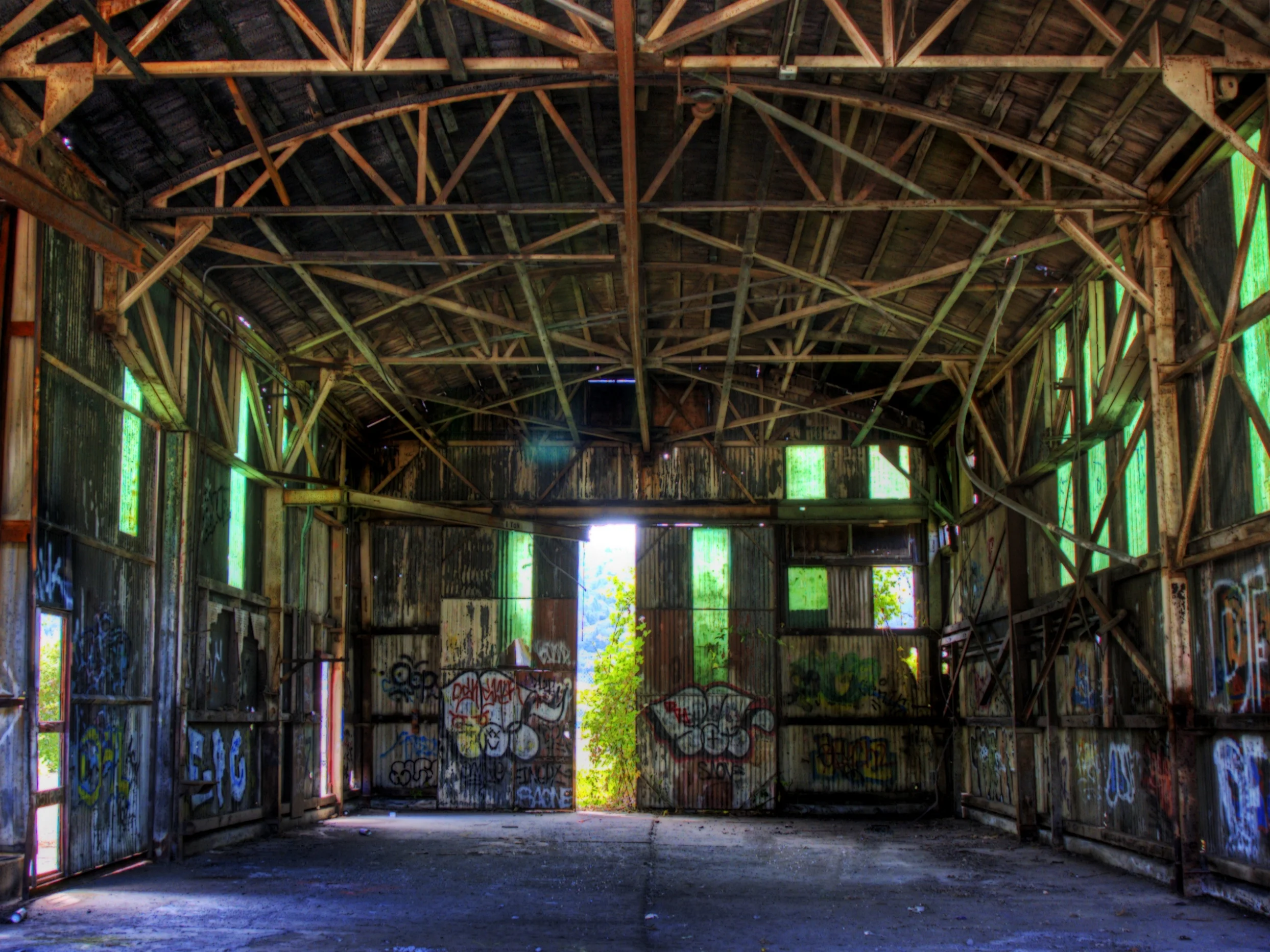Portland Street Art Alliance Hosts Qatari Artist Fatima Al Sharshani
CENTRAL EASTSIDE , PORTLAND
Artist Fatima Al-Sharshani at her mural.
Portland Street Art Alliance was pleased to work with Qatari artist Fatima Al-Sharshani via our partners at Gradient (NYC) and Qatar-USA 2021 Year of Culture program. In 2021, Year of Culture paired with JEDARIART, to bring Qatari muralists to the United States. JEDARIART is a public art initiative and international cultural exchange designed to deepen understanding between nations and their people. This is the first year JEDARIART is travelling internationally, pairing local partners with visiting artists in 5 cities across the U.S.
Over a two week period, artist Fatima Al-Sharshani worked with the assistance of Portland artist Sarah Farahat to create a stunning calligraphy-based mural at the Mt. Whitney Blocks in Southeast Portland. This was Fatima’s first visit to the U.S. and their second public art mural production.
After laying down the brushed portion of the circle, Fatima began adding letters in Arabic calligraphy. While each letter stands on its own, the bounty of letters flowing together help one appreciate the beauty of calligraphy in an altogether new way. As a finishing touch, splatters were added in an organic fashion.
The mural, titled "Never Ending / Endless" is an abstract piece that merges Arabic letters into a shape of a circle, representing continuity. The piece is intended to be viewed clockwise (Arabic writing reads right to left). Following along the circle, one’s eyes are transported down and around to Fatima’s expressive calligraphy that finishes the form.
The inner depth of the circle is a “sensory expression that sparks a notion of infinity, and the never-ending power that lives within us.”
“Because I have the passion for Arabic calligraphy, I feel that there is a relationship between myself and the letters. When I can’t write something, the letters are sad, because for a long time I did not talk to them.”
This beautiful new piece is part of a larger Portland Street Art Alliance community project known as the “Mt. Whitney Blocks.” This project features a total of 15 murals and gave Fatima the opportunity to exchange ideas and techniques with multiple Portland-based artists. Learn more about the larger Mt Whitney Blocks project here.
““I had a good experience with this project. I enjoyed getting to paint in Portland and meet fellow muralists.” ”
While in Oregon, Fatima was able to visit the Oregon Coast, tour mural sites across the city, pet her first dog, and experience the magnificence of local landmarks such as Multnomah Falls.
ABOUT THE ARTIST
Fatima Al-Sharshani
Never Ending / Endless
@qair.qa
Qatari-based calligrapher, Fatima Al-Sharshani, has been honing her artistic penmanship for the past several years. Originally a Chemistry and Food Science graduate from Qatar University, Fatima first discovered her passion for the arts in 2011.With Calligraphy, Fatima has given her written words more power. She enjoys the calmness and perseverance that comes from continuously improving her skills, and the meditative effect it has on her. While perfecting her skills in Diwani, Moroccan Calligraphy, Thulth, and Free line, she has organized multiple calligraphy workshops in order to share her passion with her community.
ABOUT QATAR USA 2021 YEAR OF CULTURE
Qatar-USA 2021 Year of Culture is a partnership between Qatar Museums (QM), the United States Embassy in Doha and the Embassy of Qatar in the United States, featuring a wide-range of programming including exhibitions, festivals, bilateral exchanges, and more.
ABOUT JADARIART
JEDARIART is an annual program in Qatar developed by Qatar Museums in 2020 to add vibrancy and meaning to the walls of Doha murals, encouraging individuals to reflect on social, historical, and cultural conversations and contains a diverse range of works by some of Qatar’s most recognized artists and by celebrated international artists throughout Doha.
